Winter in Kentucky brings about a unique transformation in the state’s avian population. As the temperatures drop and snowflakes fall, the natural landscape undergoes a subtle but significant shift, attracting various birds to the Bluegrass State.
From the iconic Northern Cardinal, with its vivid red plumage against the snowy backdrop, to the secretive Eastern Screech-Owl, huddled in tree cavities, Kentucky becomes a winter wonderland for bird enthusiasts.
This article will explore 49 remarkable bird species that call Kentucky home during the winter months.
From the majestic raptors soaring above to the colorful songbirds that grace our feeders, each bird plays a vital role in the state’s wintertime ecosystem, offering beauty, intrigue, and a connection to the natural world.
49 Winter Birds In Kentucky
Kentucky is home to various winter birds that can be spotted throughout the colder months. While the specific species you might encounter can vary depending on the region of Kentucky and the severity of the winter,
Here are 49 winter birds that are commonly found in the state during the winter season:
1. House Sparrow (Passer domesticus)
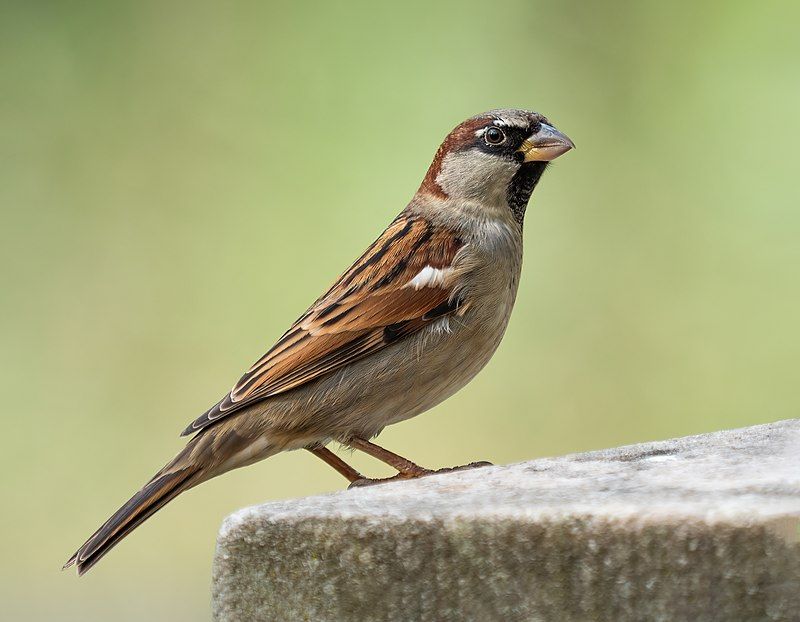
The House Sparrow, scientifically known as Passer domesticus, is a small, adaptable bird native to Europe and Asia but now found worldwide due to human introduction.
These birds are about 5 to 6 inches long, with males displaying distinctive black bibs and chestnut-colored crowns during breeding season. Females and juveniles have more subdued plumage.
House Sparrows are highly sociable birds, often seen in flocks around human habitation. They are opportunistic feeders, consuming seeds, insects, and human food scraps.
Their cheerful chirping and chirruping are a common sound in urban areas
| Kingdom | Animalia |
| Phylum | Chordata |
| Clade | Dinosauria |
| Class | Aves |
| Order | Passeriformes |
| Family | Passeridae |
| Genus | Passer |
| Species | P. domesticus |
2. Red-Bellied Woodpecker (Melanerpes carolinus)
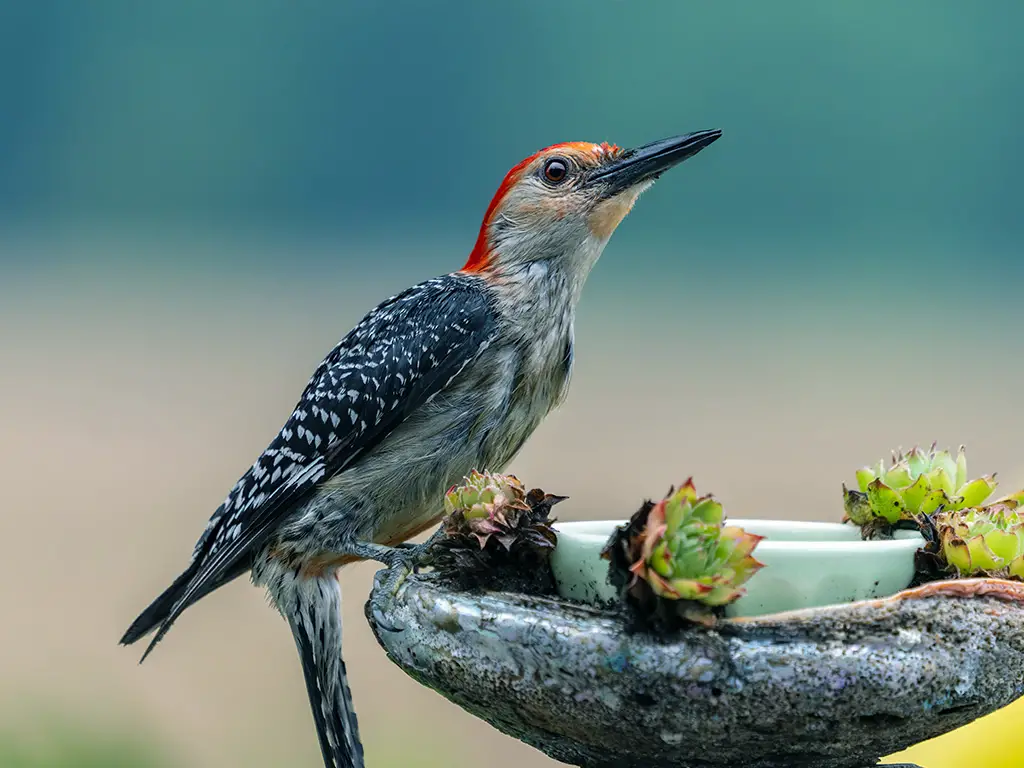
The Red-Bellied Woodpecker, scientifically known as Melanerpes carolinus, is a striking bird native to North America. Despite its name, the “red belly” is often obscured by feathers, with the head and back being the most distinctive features.
The males have a vibrant red crown and nape, while females have a red and pale crown.
These woodpeckers are adept climbers and forage on trees for insects, fruits, and nuts. Their distinctive “chur-chur-chur” calls and drumming sounds are commonly heard in wooded areas and suburban neighborhoods.
| Kingdom | Animalia |
| Phylum | Chordata |
| Clade | Dinosauria |
| Class | Aves |
| Order | Piciformes |
| Family | Picidae |
| Genus | Melanerpes |
| Species | M. carolinus |
3. American Goldfinch (Spinus tristis)

The American Goldfinch, scientifically known as Spinus tristis, is a delightful small bird native to North America. Known for its vibrant plumage, it undergoes a unique molting process.
During the breeding season, males sport bright yellow feathers with black wings and forehead. In winter, they transition to a more subdued olive-brown.
These finches primarily feed on seeds, favoring thistles, sunflowers, and dandelions. They are often seen perched on plants, extracting seeds with their specialized bills. The cheerful, undulating flight of goldfinches is a sight to behold.
| Kingdom | Animalia |
| Phylum | Chordata |
| Clade | Dinosauria |
| Class | Aves |
| Order | Passeriformes |
| Family | Fringillidae |
| Genus | Spinus |
| Species | S. tristis |
4. Downy Woodpecker (Picoides pubescens):
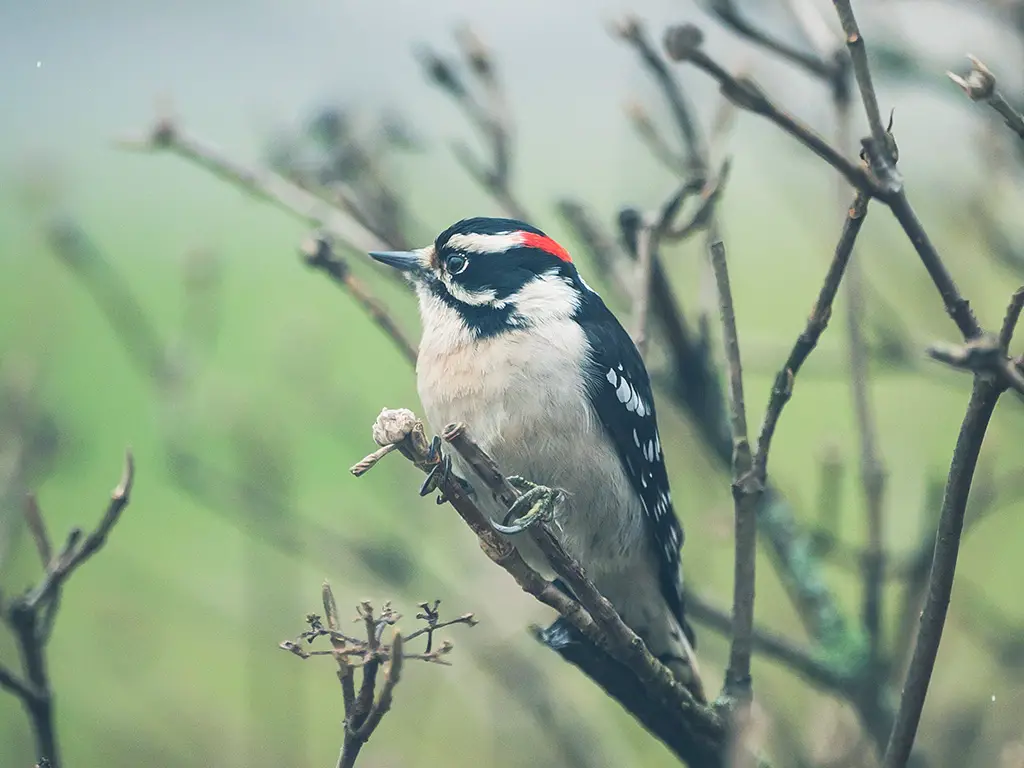
The Downy Woodpecker, scientifically named Picoides pubescens, is a petite woodpecker species found across North America. Its striking black and white plumage often confuses it with its larger cousin, the Hairy Woodpecker.
These woodpeckers are expert foragers, using their chisel-like bills to uncover insects and larvae from tree bark. Their drumming sounds serve as territorial calls and communication. They are frequent visitors to backyard feeders, enjoying suet and seeds.
| Kingdom | Animalia |
| Phylum | Chordata |
| Clade | Dinosauria |
| Class | Aves |
| Order | Piciformes |
| Family | Picidae |
| Genus | Dryobates |
| Species | D. pubescens |
5. House Finch (Haemorhous mexicanus):
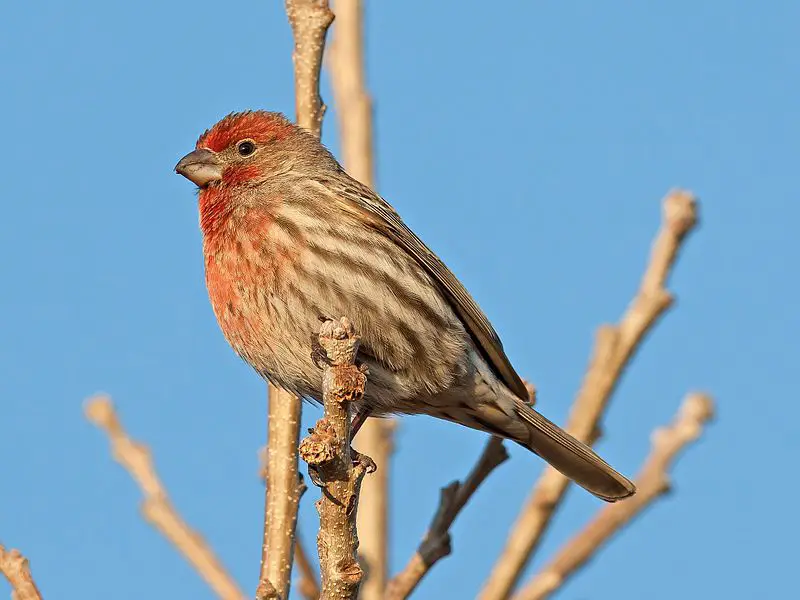
The House Finch, scientifically called Haemorhous mexicanus, is a common and adaptable bird found throughout North America. Originally native to the western United States, they have expanded their range due to human introduction.
Males display vibrant red plumage on their throats and heads, while females have more subdued brown streaks. These finches are known for their cheerful songs, often heard in urban areas. They primarily feed on seeds and are frequent visitors to bird feeders.
| Kingdom | Animalia |
| Phylum | Chordata |
| Clade | Dinosauria |
| Class | Aves |
| Order | Passeriformes |
| Family | Fringillidae |
| Genus | Haemorhous |
| Species | H. mexicanus |
6. Tufted Titmouse (Baeolophus bicolor)
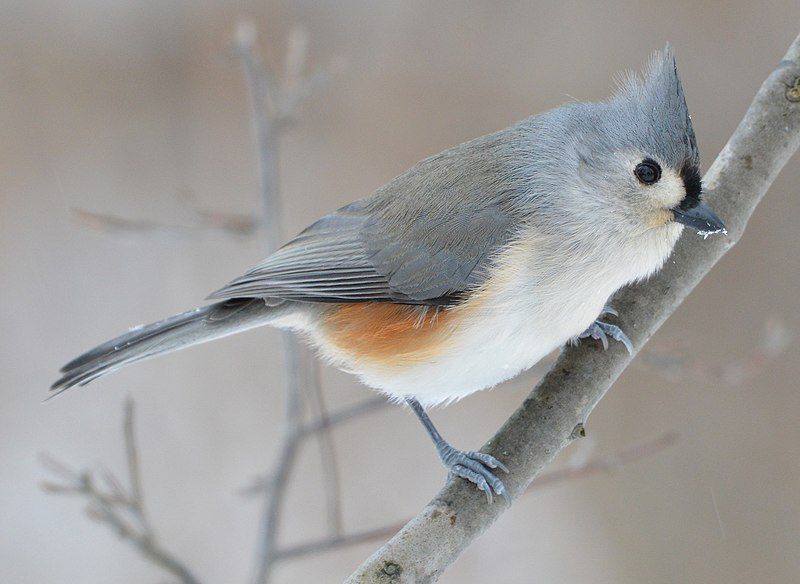
The Tufted Titmouse, scientifically known as Baeolophus bicolor, is a small, charming bird found in eastern North America. Recognizable by their gray plumage, black forehead, and distinctive tufted crest, they are often seen in mixed-species flocks.
Tufted Titmice are agile foragers, gleaning insects, seeds, and berries from trees and shrubs. Their clear, whistling calls are familiar in woodlands and suburban gardens.
| Kingdom | Animalia |
| Phylum | Chordata |
| Clade | Dinosauria |
| Class | Aves |
| Order | Passeriformes |
| Family | Paridae |
| Genus | Baeolophus |
| Species | B. bicolor |
7. Mourning Dove (Zenaida macroura)
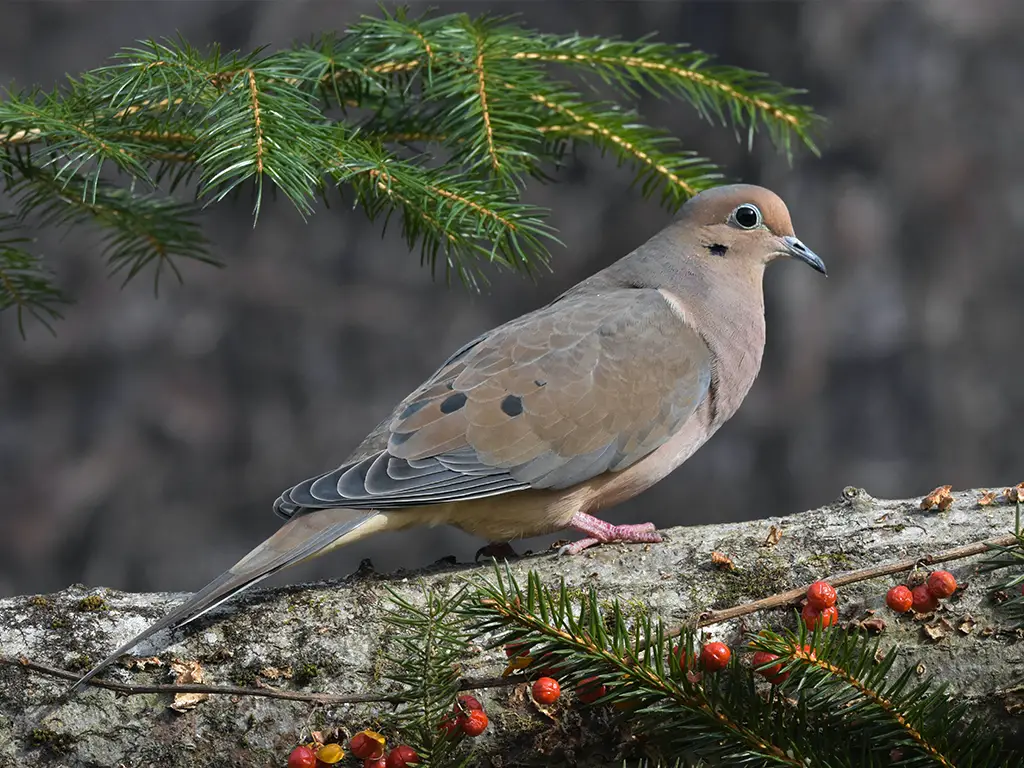
The Mourning Dove, scientifically named Zenaida macroura, is a common and gentle bird found across North America. These doves are known for their soft, mournful cooing sounds, which give them their name.
Mourning Doves have a delicate appearance with pale grayish-brown plumage and pointed tails. They primarily feed on seeds and grains, often foraging on the ground. Their soothing presence and gentle calls make them a beloved sight in urban and rural areas alike.
| Kingdom | Animalia |
| Phylum | Chordata |
| Clade | Dinosauria |
| Class | Aves |
| Order | Columbiformes |
| Family | Columbidae |
| Genus | Zenaida |
| Species | Z. macroura |
8. Carolina Chickadee (Poecile carolinensis)
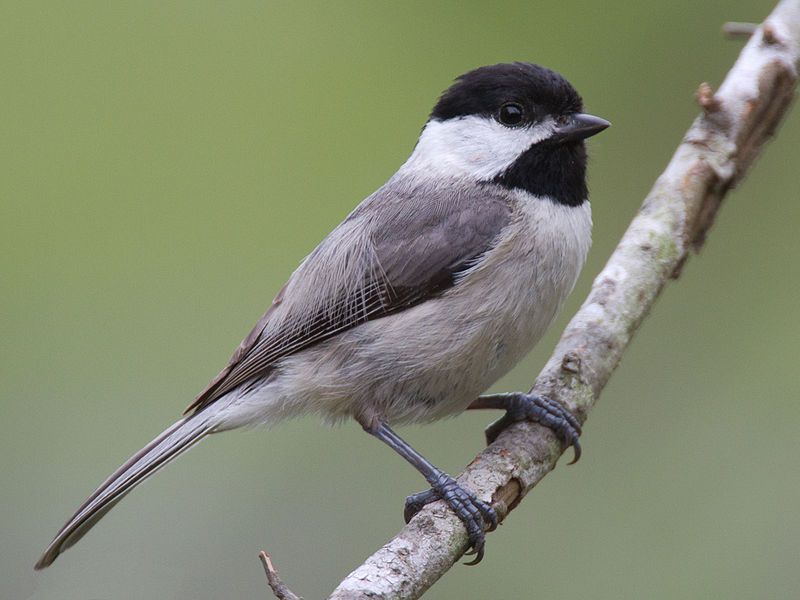
The Carolina Chickadee, scientifically known as Poecile carolinensis, is a charming, small bird native to the southeastern United States.
These friendly and inquisitive birds are recognized by their distinctive black cap and bib, white cheeks, and grayish plumage.
Carolina Chickadees are known for their cheerful “chick-a-dee-dee-dee” calls and frequent visits to bird feeders.
They primarily feed on insects, seeds, and berries, using their specialized bills to crack open seeds.
| Kingdom | Animalia |
| Phylum | Chordata |
| Clade | Dinosauria |
| Class | Aves |
| Order | Passeriformes |
| Family | Paridae |
| Genus | Poecile |
| Species | P. carolinensis |
9. Dark-Eyed Junco (Junco hyemalis)
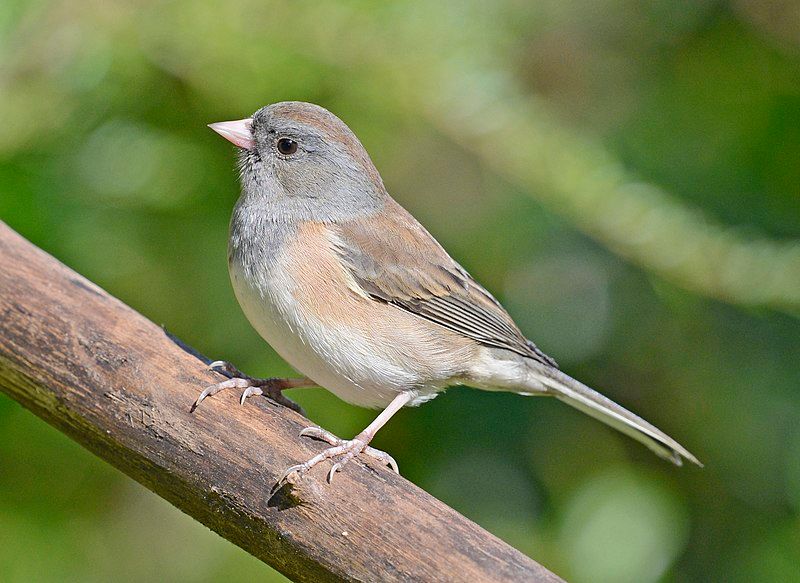
The Dark-Eyed Junco, scientifically named Junco hyemalis, is a widespread and adaptable songbird found throughout North America.
These sparrows are known for their distinct coloration, with dark gray plumage and bright white undersides. Dark-eyed juncos are often seen foraging on the ground for seeds and insects.
Their behavior changes with the seasons; in winter, they form flocks and are frequent visitors to backyard feeders. They have a simple, melodious song and are a common sight in forests and suburban areas.
| Kingdom | Animalia |
| Phylum | Chordata |
| Clade | Dinosauria |
| Class | Aves |
| Order | Passeriformes |
| Family | Passerellidae |
| Genus | Junco |
| Species | J. hyemalis |
10. Northern Cardinal (Cardinalis cardinalis)
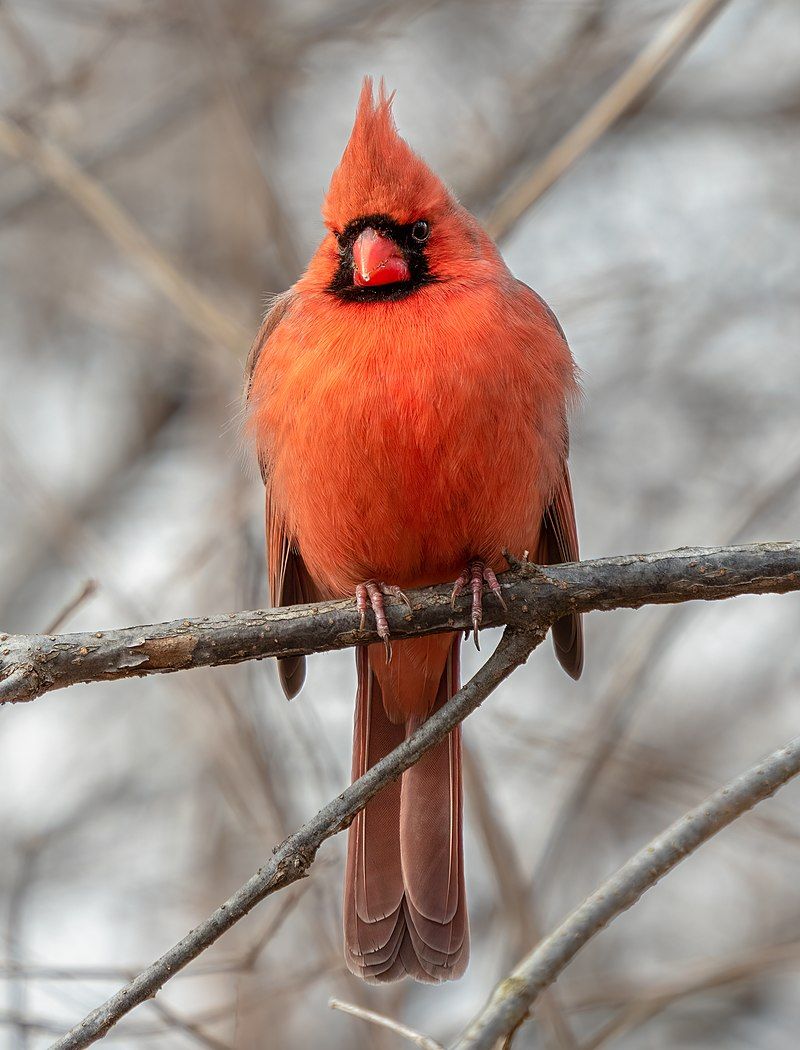
The Northern Cardinal, scientifically called Cardinalis cardinalis, is a striking bird native to North America. Males are known for their vibrant red plumage, while females have a more subdued brown color with a hint of red.
Cardinals are known for their clear, melodious songs and are often heard singing from prominent perches. They are seed-eaters but also consume insects and berries. These birds are popular among birdwatchers due to their striking appearance and distinctive calls.
| Kingdom | Animalia |
| Phylum | Chordata |
| Clade | Dinosauria |
| Class | Aves |
| Order | Passeriformes |
| Family | Cardinalidae |
| Genus | Cardinalis |
| Species | C. cardinalis |
11. White-Breasted Nuthatch (Sitta carolinensis)
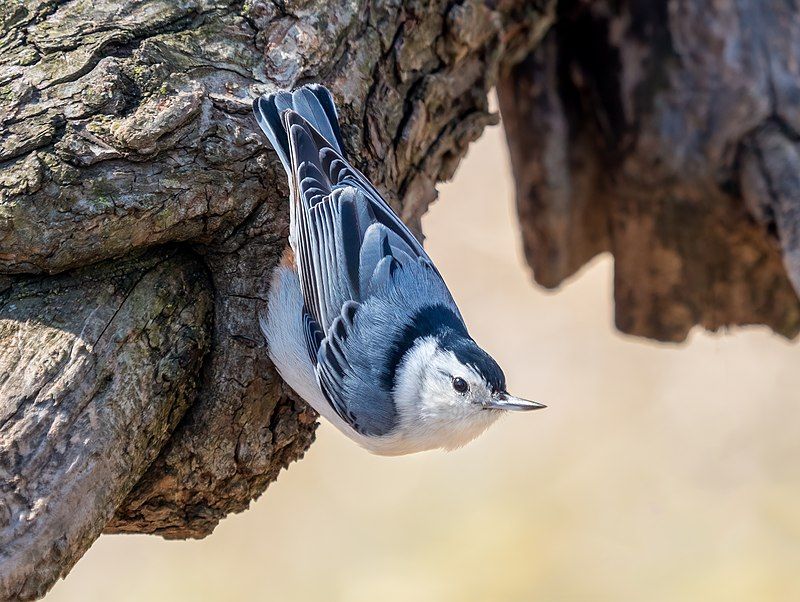
The White-Breasted Nuthatch, scientifically named Sitta carolinensis, is a small, agile bird found across North America. These nuthatches are recognized by their bluish-gray upperparts, white face, and distinct black cap.
White-Breasted Nuthatches are known for their unique habit of walking headfirst down tree trunks and branches in search of insects and seeds. Their nasal “yank-yank” calls are common in woodlands and suburban areas.
| Kingdom | Animalia |
| Phylum | Chordata |
| Clade | Dinosauria |
| Class | Aves |
| Order | Passeriformes |
| Family | Sittidae |
| Genus | Sitta |
| Species | S. carolinensis |
12. Cardinalidae
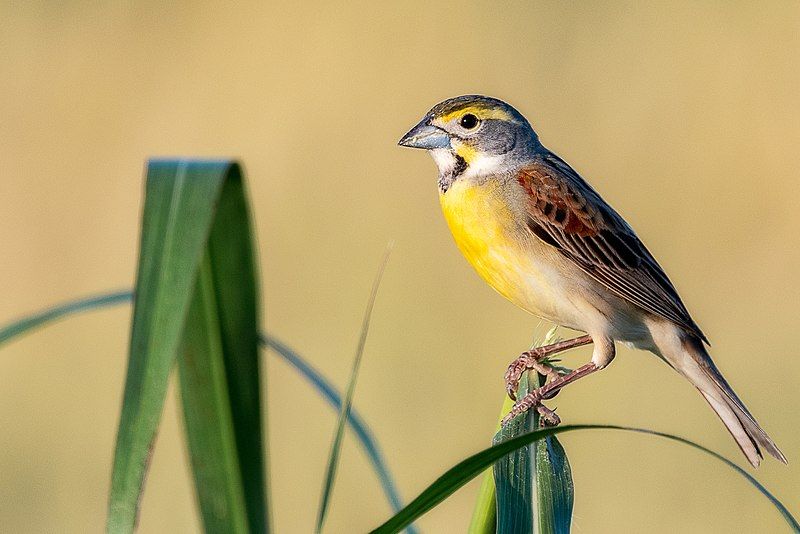
The Cardinalidae family, scientifically known as Cardinalidae, includes a diverse group of colorful songbirds primarily found in the Americas.
Members of this family are known for their striking plumage and melodious songs.
Some well-known representatives include the Northern Cardinal and the Rose-breasted Grosbeak. These birds delight birdwatchers due to their vibrant colors and cheerful calls.
| Kingdom | Animalia |
| Phylum | Chordata |
| Clade | Dinosauria |
| Class | Aves |
| Order | Passeriformes |
| Family | Cardinalidae |
13. Song Sparrow (Melospiza melodia)
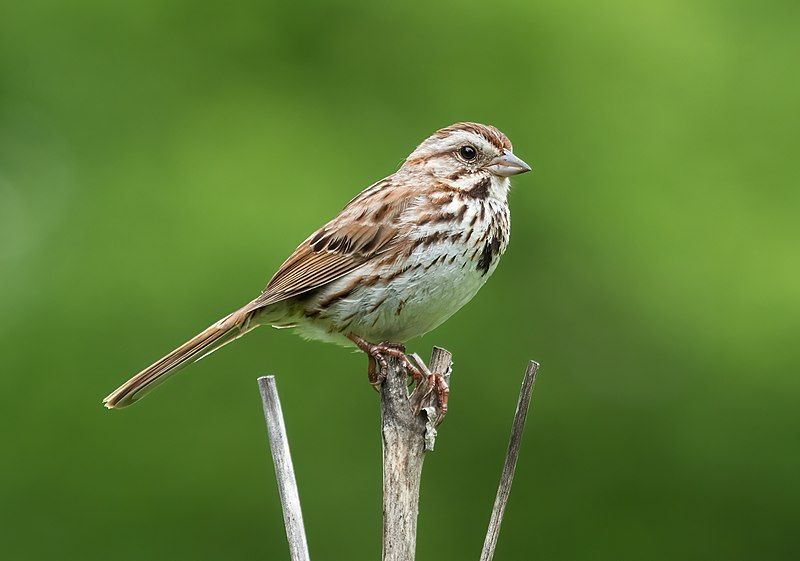
The Song Sparrow, scientifically named Melospiza melodia, is a widespread and familiar bird in North America.
It is known for its musical and varied songs, which vary among regions. Song Sparrows have brown streaked plumage with a distinctive dark spot in the middle of their breast.
| Kingdom | Animalia |
| Phylum | Chordata |
| Clade | Dinosauria |
| Class | Aves |
| Order | Passeriformes |
| Family | Passerellidae |
| Genus | Melospiza |
| Species | M. melodia |
14. Blue Jay (Cyanocitta cristata)
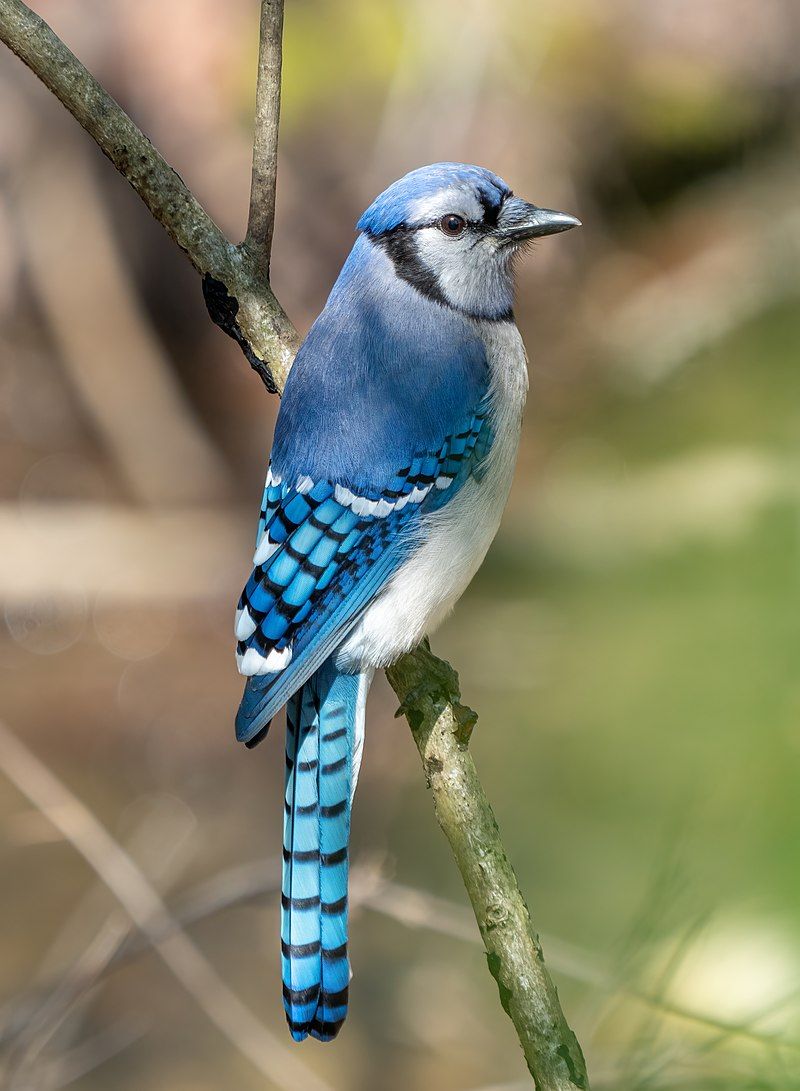
The Blue Jay, scientifically known as Cyanocitta cristata, is a striking bird found in eastern North America.
These birds are recognized by their vibrant blue plumage, white underparts, and prominent crest. Blue Jays are known for their raucous calls and their ability to mimic other bird species.
| Kingdom | Animalia |
| Phylum | Chordata |
| Clade | Dinosauria |
| Class | Aves |
| Order | Passeriformes |
| Family | Corvidae |
| Genus | Cyanocitta |
| Species | C. cristata |
15. American Robin (Turdus migratorius)
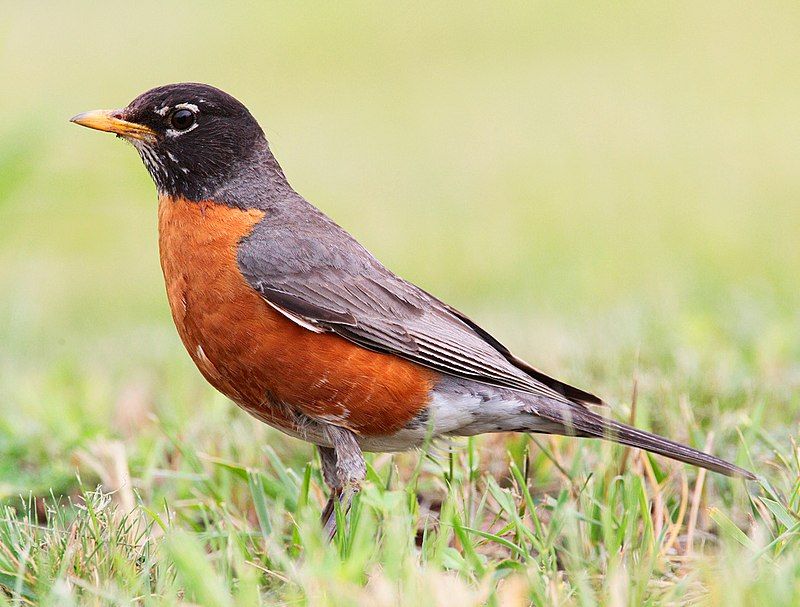
The American Robin, scientifically called Turdus migratorius, is a widespread and beloved bird in North America.
They are known for their orange-red breasts, grayish upperparts, and distinctive song that heralds the arrival of spring. American Robins are versatile feeders, consuming insects, fruits, and earthworms.
| Kingdom | Animalia |
| Phylum | Chordata |
| Clade | Dinosauria |
| Class | Aves |
| Order | Passeriformes |
| Family | Turdidae |
| Genus | Turdus |
| Species | T. migratorius |
16. Common Starling (Sturnus vulgaris)
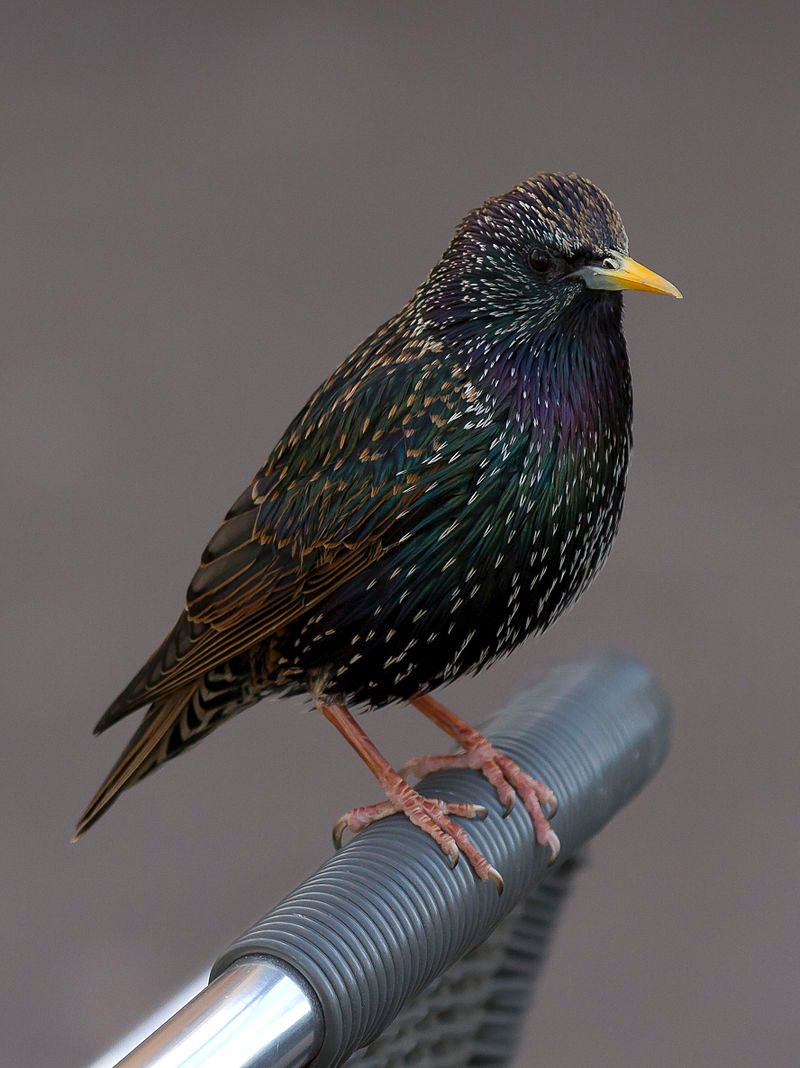
The Common Starling, scientifically named Sturnus vulgaris, is a bird native to Europe but has been introduced to North America and other regions.
These birds have iridescent black plumage speckled with white spots during breeding season. They are known for their remarkable vocal abilities and ability to mimic various sounds, including human-made noises.
| Kingdom | Animalia |
| Phylum | Chordata |
| Clade | Dinosauria |
| Class | Aves |
| Order | Passeriformes |
| Family | Sturnidae |
| Genus | Sturnus |
| Species | S. vulgaris |
17. Northern Mockingbird (Mimus polyglottos)
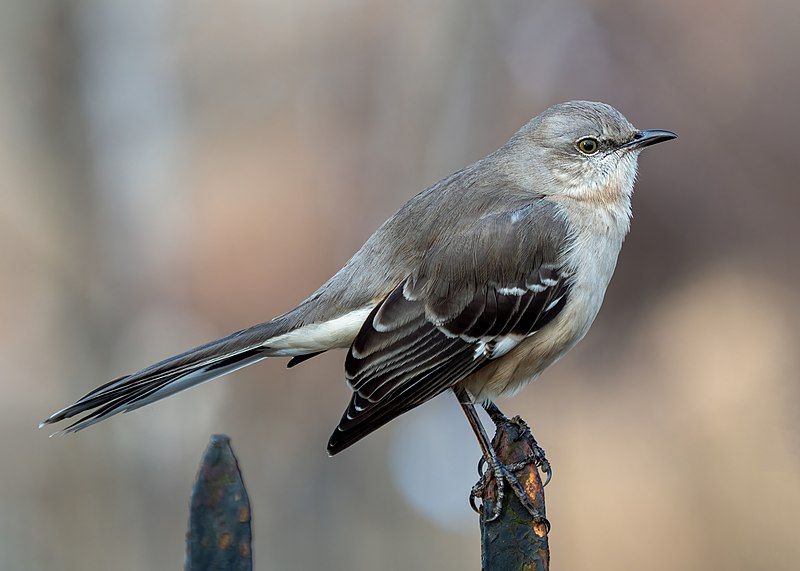
The Northern Mockingbird, scientifically known as Mimus polyglottos, is a remarkable bird native to North America. Recognizable by its elegant gray plumage and long tail, it is renowned for its extraordinary singing abilities.
Mockingbirds are masters of mimicry, imitating the songs of other birds and even sounds from the environment, showcasing their vocal repertoire.
These birds are omnivorous, feasting on insects, fruits, and berries. They are known for their assertive behavior when defending their territories.
The Northern Mockingbird’s scientific name, “polyglottos,” highlights its multilingual vocal talents. They are common in urban and suburban areas, filling the air with their melodious and diverse songs.
| Kingdom | Animalia |
| Phylum | Chordata |
| Clade | Dinosauria |
| Class | Aves |
| Order | Passeriformes |
| Family | Mimidae |
| Genus | Mimus |
| Species | M. polyglottos |
18. Eastern Bluebird (Sialia sialis)
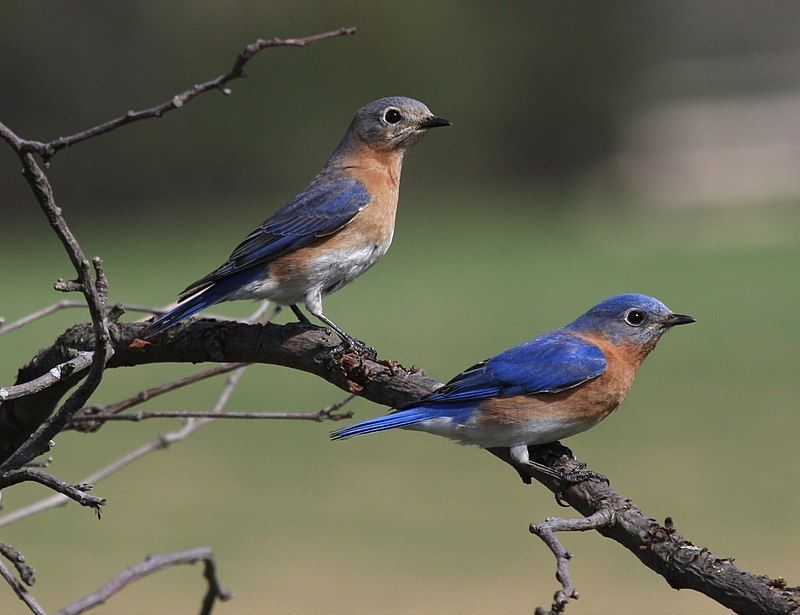
The Eastern Bluebird, scientifically named Sialia sialis, symbolizes hope and happiness. These small thrushes are known for their vibrant blue plumage, orange chests, and white bellies, making them a favorite among bird enthusiasts.
Eastern Bluebirds primarily feed on insects and berries, often perching on open branches or nest boxes. They are cavity-nesting birds and readily use man-made birdhouses for breeding.
Their sweet, melodious songs and lovely appearance make them a cherished sight in gardens and meadows across eastern North America.
| Kingdom | Animalia |
| Phylum | Chordata |
| Clade | Dinosauria |
| Class | Aves |
| Order | Passeriformes |
| Family | Turdidae |
| Genus | Sialia |
| Species | S. sialis |
19. Northern Flicker (Colaptes auratus)
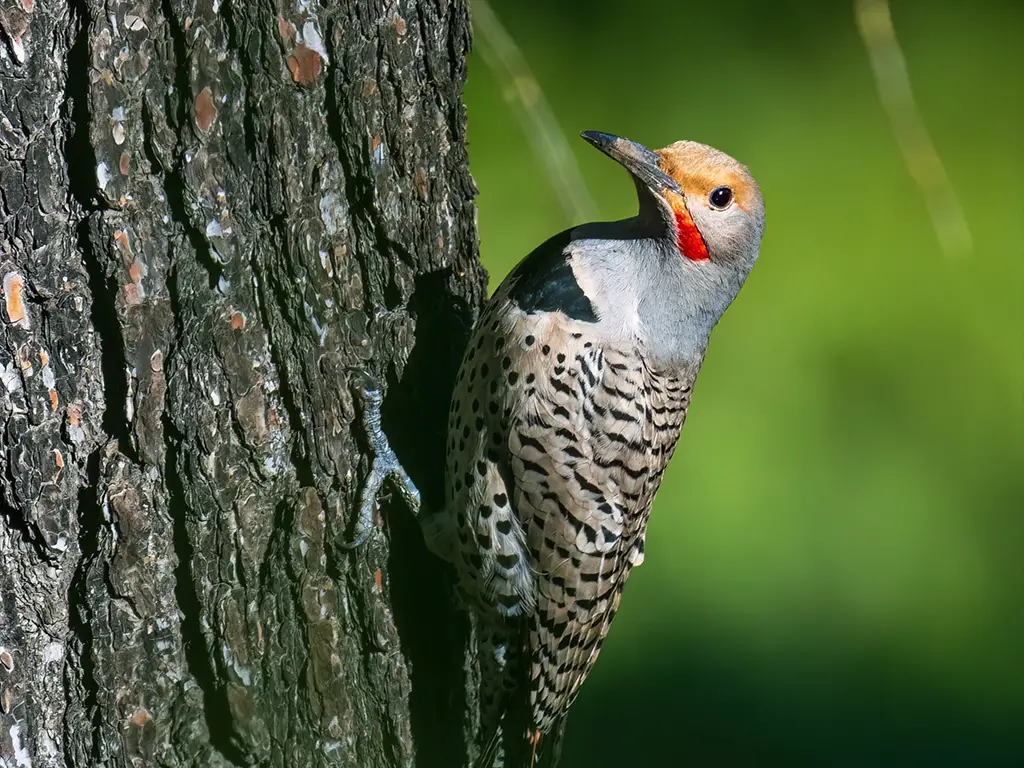
The Northern Flicker, scientifically called Colaptes auratus, is a woodpecker species known for its distinctive appearance and behavior. These birds have brown plumage, conspicuous black markings, and a prominent white rump patch.
Northern Flickers are ground-feeding woodpeckers, foraging for ants and beetles with their long, pointed bills. They are also unique among woodpeckers for their habit of frequently feeding on the ground.
Their calls mix loud, clear “wick-a-wick-a-wick” sounds and soft, rattling calls. They are widespread in North America, often seen in open woodlands and suburban areas.
| Kingdom | Animalia |
| Phylum | Chordata |
| Clade | Dinosauria |
| Class | Aves |
| Order | Piciformes |
| Family | Picidae |
| Genus | Colaptes |
| Species | C. auratus |
20. American Crow (Corvus brachyrhynchos):
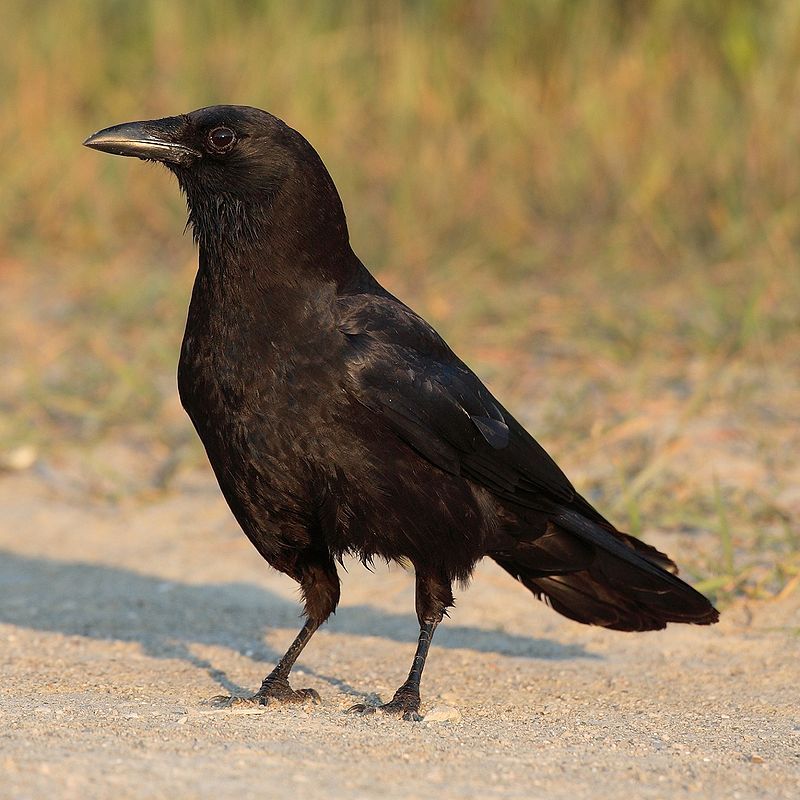
The American Crow, scientifically known as Corvus brachyrhynchos, is one of North America’s most familiar and adaptable birds. Crows are large, all-black birds with intelligent and social behaviors.
These birds are omnivorous scavengers, feeding on various food items, including carrion, insects, seeds, and even human food.
They are highly vocal, with a repertoire of caws, calls, and vocalizations used for communication and social interactions.
American Crows are often seen in urban, suburban, and rural environments and are known for their keen problem-solving abilities.
| Kingdom | Animalia |
| Phylum | Chordata |
| Clade | Dinosauria |
| Class | Aves |
| Order | Passeriformes |
| Family | Corvidae |
| Genus | Corvus |
| Species | C. brachyrhynchos |
21. Turkey Vulture (Cathartes aura)
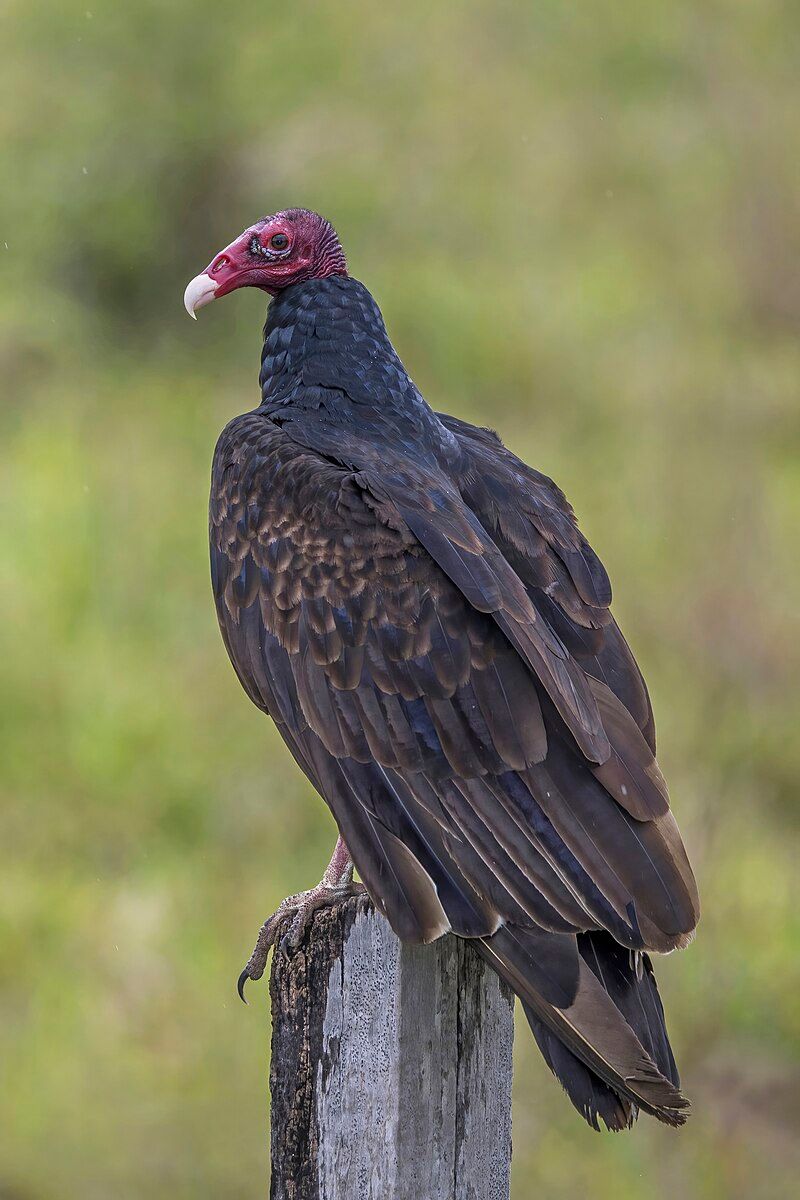
The Turkey Vulture, scientifically known as Cathartes aura, is a large, graceful bird of prey found throughout the Americas.
Recognizable by its distinctive red head and naked face, these vultures are superb scavengers, primarily feeding on carrion. They have keen eyesight and a remarkable ability to locate decaying carcasses from high in the sky.
Turkey Vultures are often seen soaring effortlessly on thermals, using their broad wings to maintain flight. They are essential in the ecosystem, as they help to clean up and recycle carrion, preventing the spread of disease.
| Kingdom | Animalia |
| Phylum | Chordata |
| Clade | Dinosauria |
| Class | Aves |
| Order | Accipitriformes |
| Family | Cathartidae |
| Genus | Cathartes |
| Species | C. aura |
22. Canada Goose (Branta canadensis)

The Canada Goose, scientifically named Branta canadensis, is a widespread waterfowl species in North America. These geese are known for their distinctive black heads and necks, white cheek patches, and brownish-gray bodies.
Canada Geese are migratory birds, with populations traveling thousands of miles between their breeding and wintering grounds. They feed on aquatic plants, grains, and grasses, often seen in parks, lakes, and rivers across North America.
| Kingdom | Animalia |
| Phylum | Chordata |
| Clade | Dinosauria |
| Class | Aves |
| Order | Anseriformes |
| Family | Anatidae |
| Genus | Branta |
| Species | B. canadensis |
23. Mallard (Anas platyrhynchos)
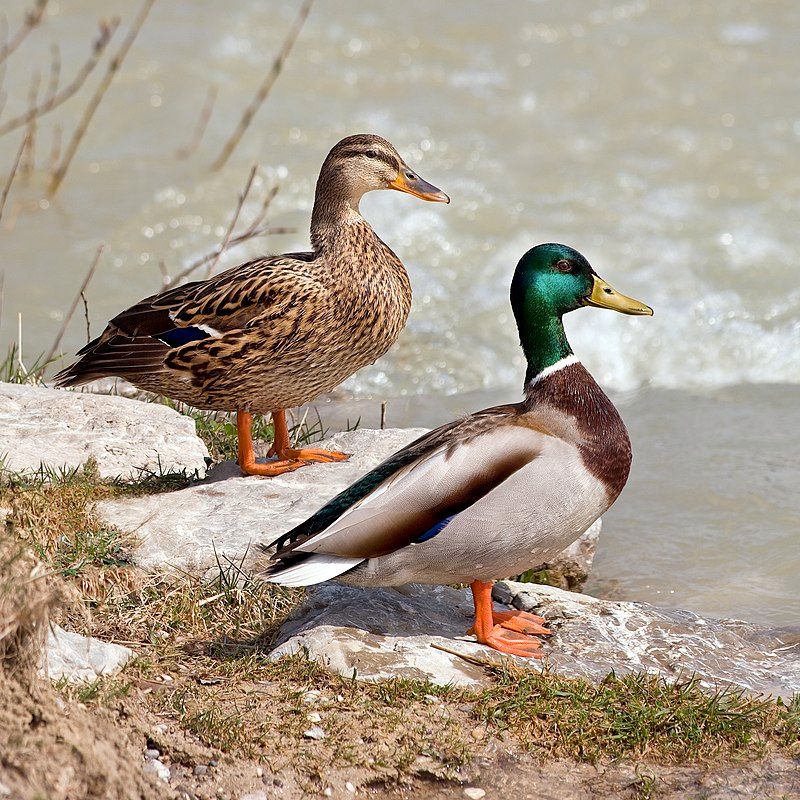
The Mallard, scientifically called Anas platyrhynchos, is one of the most recognized and abundant duck species worldwide. Males have vibrant iridescent green heads, while females have mottled brown plumage.
Mallards are adaptable and can be found in various wetland habitats, from ponds and rivers to urban parks. They are omnivorous, feeding on aquatic plants, insects, and small aquatic creatures. Mallards are also popular game birds for hunters.
| Kingdom | Animalia |
| Phylum | Chordata |
| Clade | Dinosauria |
| Class | Aves |
| Order | Anseriformes |
| Family | Anatidae |
| Genus | Anas |
| Species | A. platyrhynchos |
24. Red-tailed Hawk (Buteo jamaicensis)
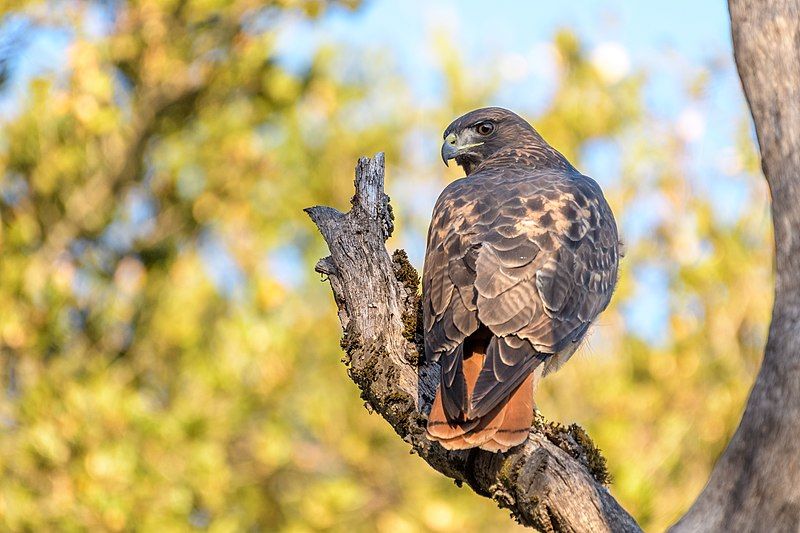
The Red-tailed Hawk, scientifically known as Buteo jamaicensis, is a magnificent raptor found across North America. These hawks are known for their reddish-brown tails, but their plumage varies with age and region.
Red-tailed Hawks are powerful hunters, preying on mammals, birds, and reptiles. They soar gracefully in the sky, using their keen eyesight to spot prey. Their distinctive scream is often used in movies to represent a generic raptor call.
| Kingdom | Animalia |
| Phylum | Chordata |
| Clade | Dinosauria |
| Class | Aves |
| Order | Accipitriformes |
| Family | Accipitridae |
| Genus | Buteo |
| Species | B. jamaicensis |
25. Indigo Bunting (Passerina cyanea)
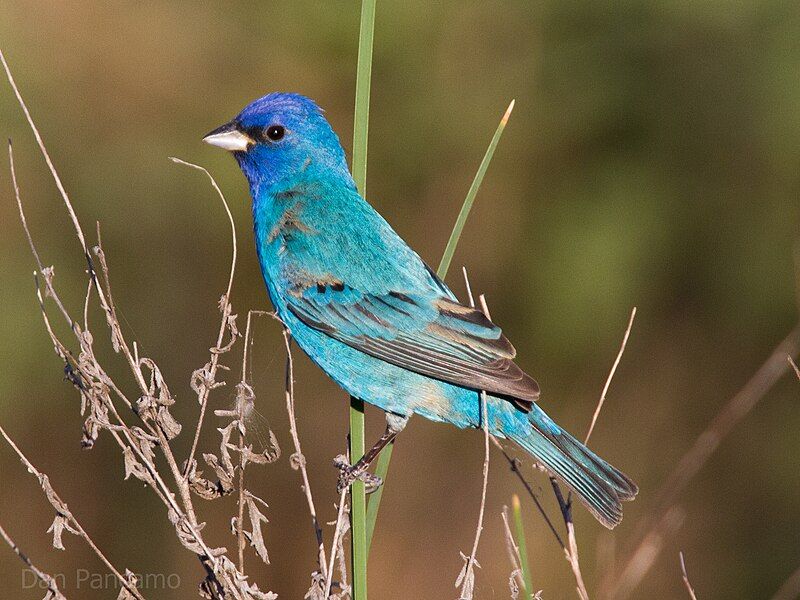
The Indigo Bunting, scientifically named Passerina cyanea, is a small, brilliantly colored songbird native to North America. Males are strikingly blue, while females have more subdued brown plumage.
Indigo Buntings are known for their melodious and sweet songs, often heard in woodlands, shrubby areas, and along roadsides.
They primarily feed on seeds and insects. Their vibrant colors and cheerful songs make them a favorite among birdwatchers.
| Kingdom | Animalia |
| Phylum | Chordata |
| Clade | Dinosauria |
| Class | Aves |
| Order | Passeriformes |
| Family | Cardinalidae |
| Genus | Passerina |
| Species | P. cyanea |
26. Purple Finch (Haemorhous purpureus):
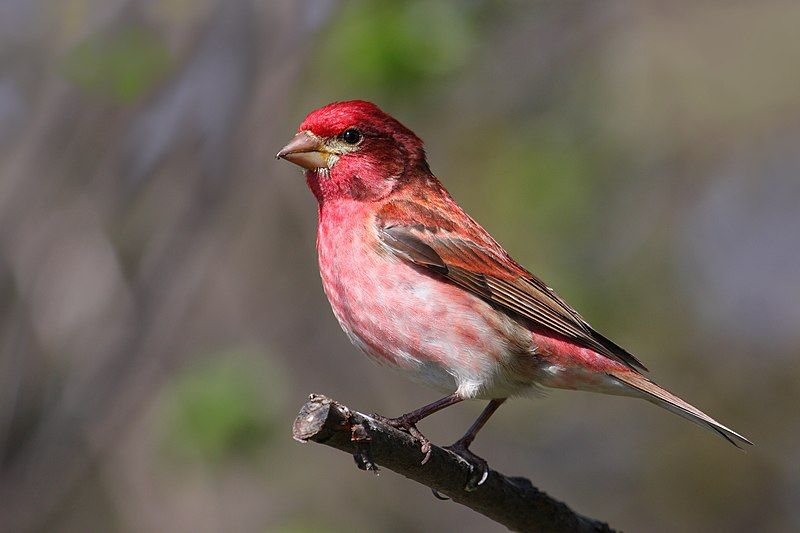
The Purple Finch, scientifically known as Haemorhous purpureus, is a striking songbird native to North America.
Adult males sport vibrant raspberry-red plumage, while females and juveniles have brown streaked feathers. Their conical bills are adapted for cracking seeds, which comprise a significant portion of their diet.
Purple Finches are known for their sweet and warbling songs. They are often found in wooded areas, gardens, and suburban landscapes. These finches are migratory, with some populations moving south during the winter.
| Kingdom | Animalia |
| Phylum | Chordata |
| Clade | Dinosauria |
| Class | Aves |
| Order | Passeriformes |
| Family | Fringillidae |
| Genus | Haemorhous |
| Species | H. purpureus |
27. Eastern Towhee (Pipilo erythrophthalmus):
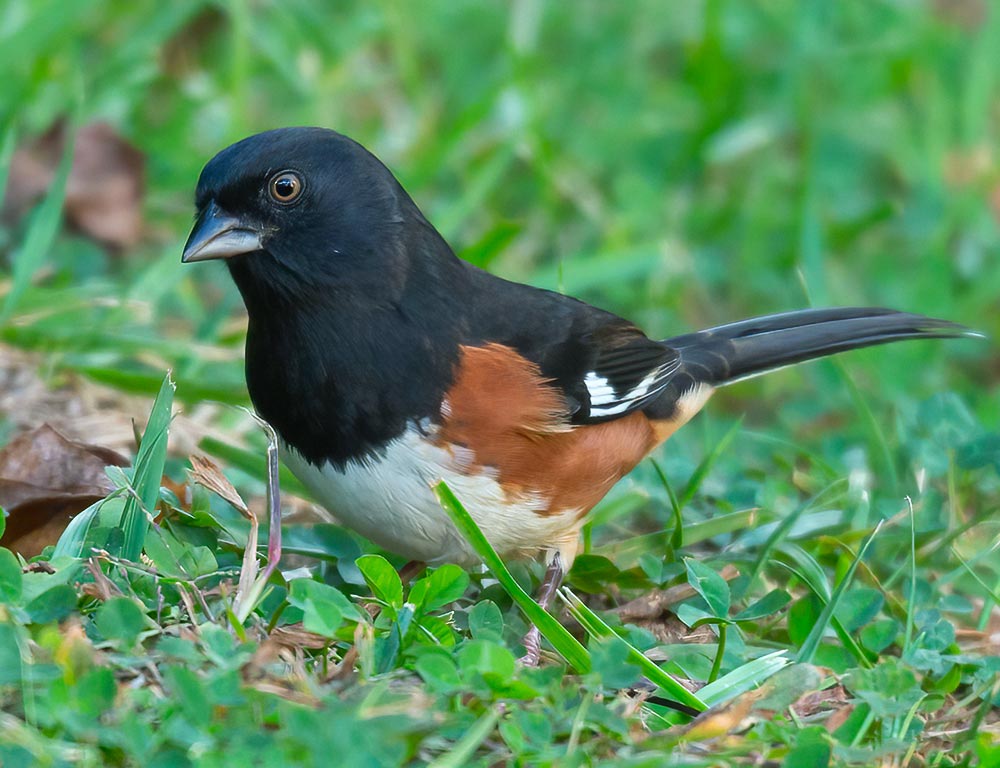
The Eastern Towhee, scientifically named Pipilo erythrophthalmus, is a boldly marked bird found in eastern North America. Males have striking black plumage with white belly and red eyes, while females have a brownish hue.
Towhees are known for their distinct “drink your tea” call, which varies regionally. They forage on the ground, scratching leaf litter for insects, seeds, and berries. Their habitat includes shrubby areas, woodlands, and thickets.
| Kingdom | Animalia |
| Phylum | Chordata |
| Clade | Dinosauria |
| Class | Aves |
| Order | Passeriformes |
| Family | Passerellidae |
| Genus | Pipilo |
| Species | P. erythrophthalmus |
28. Barn Swallow (Hirundo rustica)
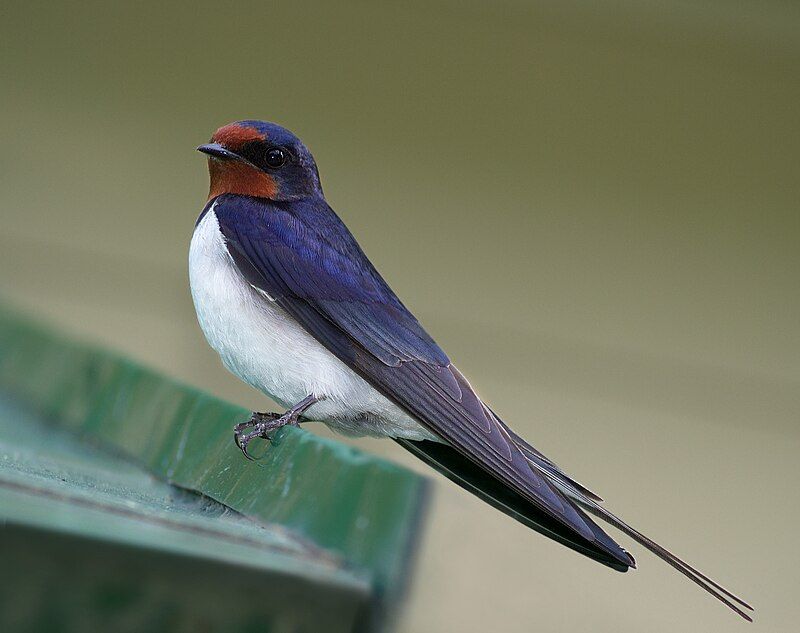
The Barn Swallow, scientifically known as Hirundo rustica, is a graceful and agile bird known for its long, forked tail. They have cobalt-blue upperparts and a distinctive orange throat and forehead.
Barn Swallows are superb aerial acrobats, catching insects in flight. They often build their cup-shaped mud nests in barns, sheds, and other structures. Their cheerful twittering calls are common in rural areas and open landscapes.
| Kingdom | Animalia |
| Phylum | Chordata |
| Clade | Dinosauria |
| Class | Aves |
| Order | Passeriformes |
| Family | Hirundinidae |
| Genus | Hirundo |
| Species | H. rustica |
29. Canvasback (Aythya valisineria)
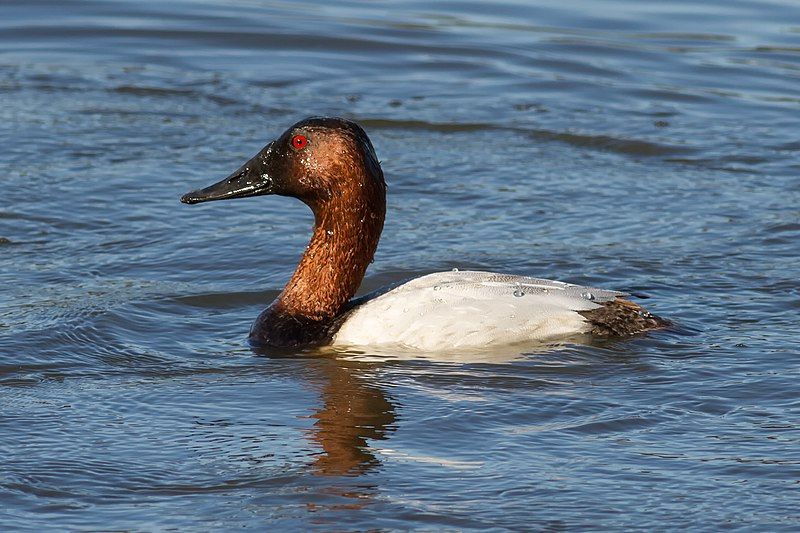
The Canvasback, scientifically called Aythya valisineria, is a large diving duck native to North America.
Males have striking red eyes, black bills, and distinctive canvas-like markings on their backs, while females have more subdued plumage.
Canvasbacks are known for their exceptional diving abilities and foraging for aquatic plants and invertebrates in deep waters.
They are often found in freshwater lakes, marshes, and coastal estuaries. These ducks are important game birds and are highly sought after by hunters.
| Kingdom | Animalia |
| Phylum | Chordata |
| Clade | Dinosauria |
| Class | Aves |
| Order | Anseriformes |
| Family | Anatidae |
| Genus | Aythya |
| Species | A. valisineria |
30. Hermit Thrush (Catharus guttatus)
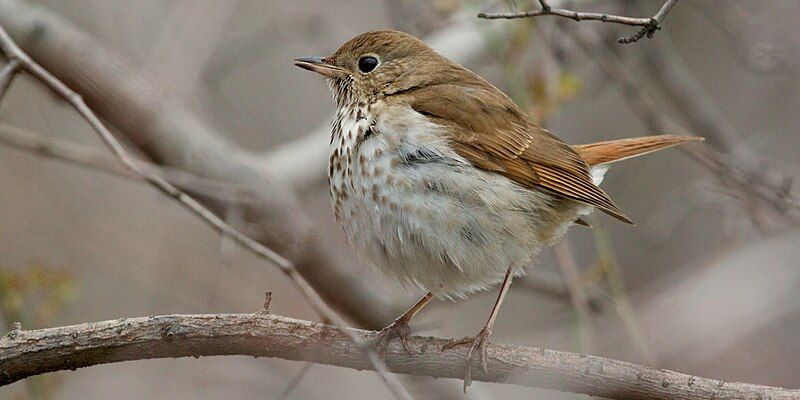
The Hermit Thrush, scientifically known as Catharus guttatus, is a modestly colored but melodious songbird found in North America. They have warm brown plumage with a spotted breast.
Hermit Thrushes are celebrated for their hauntingly beautiful and flute-like songs, often heard in woodlands and forested areas.
They are ground foragers, feeding on insects, berries, and small invertebrates. Their ethereal songs contribute to the tranquility of wooded habitats.
| Kingdom | Animalia |
| Phylum | Chordata |
| Clade | Dinosauria |
| Class | Aves |
| Order | Passeriformes |
| Family | Turdidae |
| Genus | Catharus |
| Species | C. guttatus |
31. Eastern Phoebe (Sayornis phoebe)
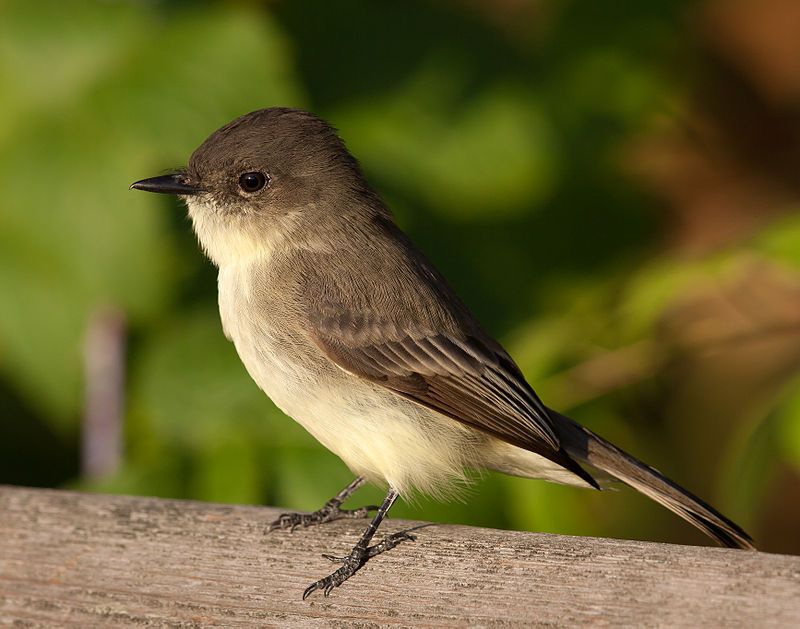
The Eastern Phoebe, scientifically known as Sayornis phoebe, is a small, charming flycatcher found in eastern North America.
These birds have grayish-brown plumage, white undersides, and a distinctive dark head with a peaked crest. They are often seen perched on branches or wires, occasionally making quick sallies to catch flying insects.
Eastern Phoebes are known for their distinctive call, which sounds like their name, “fee-bee.” They are adaptable birds, often nesting near human structures such as bridges, buildings, and cliffs. Their choice of nesting sites and willingness to use nest boxes makes them a favorite among birdwatchers.
| Kingdom | Animalia |
| Phylum | Chordata |
| Clade | Dinosauria |
| Class | Aves |
| Order | Passeriformes |
| Family | Tyrannidae |
| Genus | Sayornis |
| Species | S. phoebe |
32. Ruby-Throated Hummingbird (Archilochus colubris)
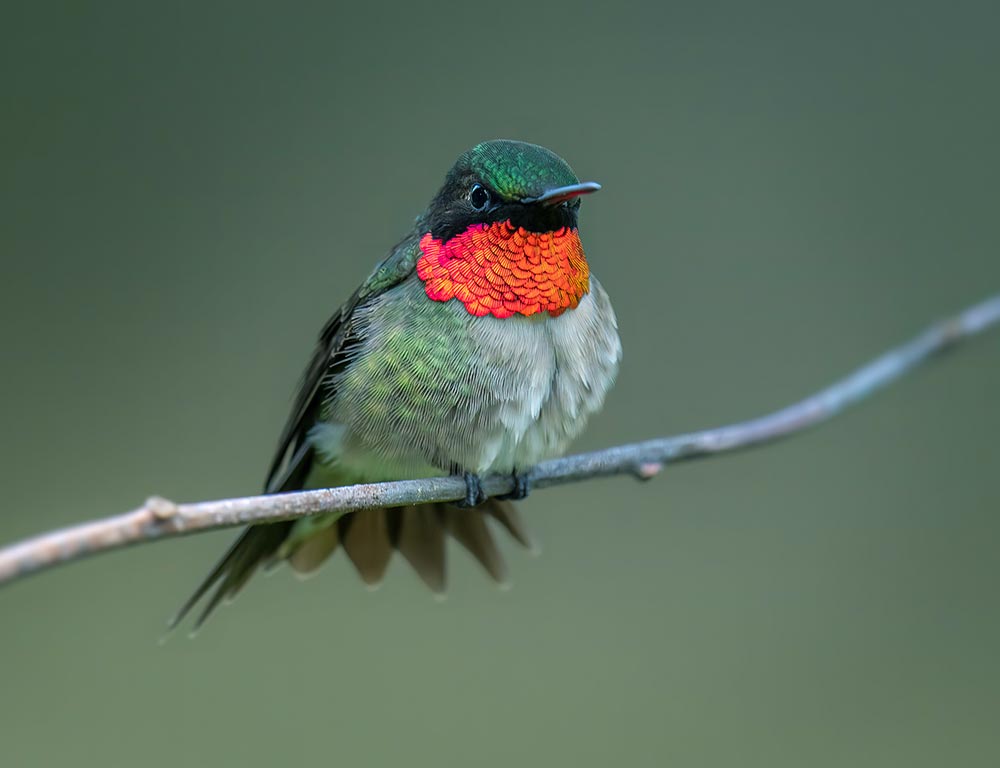
The Ruby-Throated Hummingbird, scientifically named Archilochus colubris, is a jewel-like bird found in eastern North America. These tiny birds are known for their iridescent green plumage and the dazzling ruby-red throat patch of males.
Ruby-throated hummingbirds are master hoverers, using their rapid wingbeats to feed on nectar from flowers and sugar water from feeders.
They are highly territorial and have high-pitched, buzzing calls. Their long migrations to Central America and back to breed in North America are remarkable feats for such small birds.
| Kingdom | Animalia |
| Phylum | Chordata |
| Clade | Strisores |
| Class | Aves |
| Order | Apodiformes |
| Family | Trochilidae |
| Genus | Archilochus |
| Species | A. colubris |
33. Pileated Woodpecker (Dryocopus pileatus)
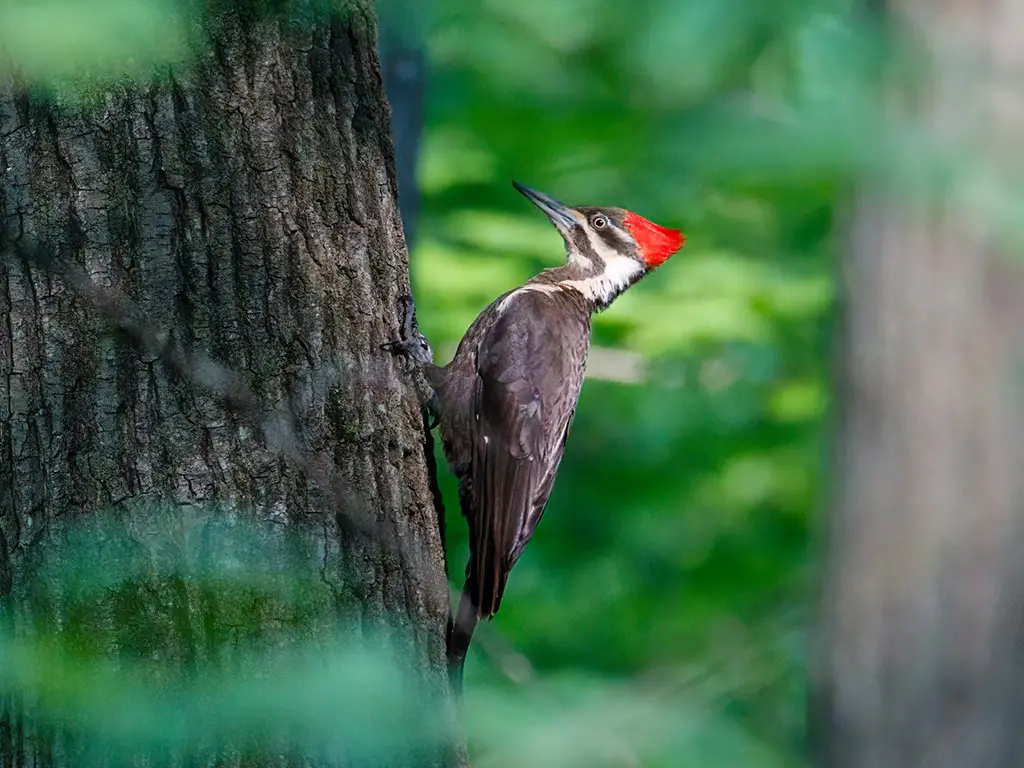
The Pileated Woodpecker, scientifically called Dryocopus pileatus, is the largest woodpecker in North America. These striking birds have black plumage, a vivid red crest, and white markings.
Pileated Woodpeckers are known for their distinctive “wuk-wuk-wuk” calls and their deep, resonant drumming sounds while excavating tree trunks for insects and larvae.
They are often found in mature forests with ample dead wood, where they are crucial for ecosystem health by controlling insect populations.
| Kingdom | Animalia |
| Phylum | Chordata |
| Clade | Dinosauria |
| Class | Aves |
| Order | Piciformes |
| Family | Picidae |
| Genus | Dryocopus |
| Species | D. pileatus |
34. Swamp Sparrow (Melospiza georgiana)
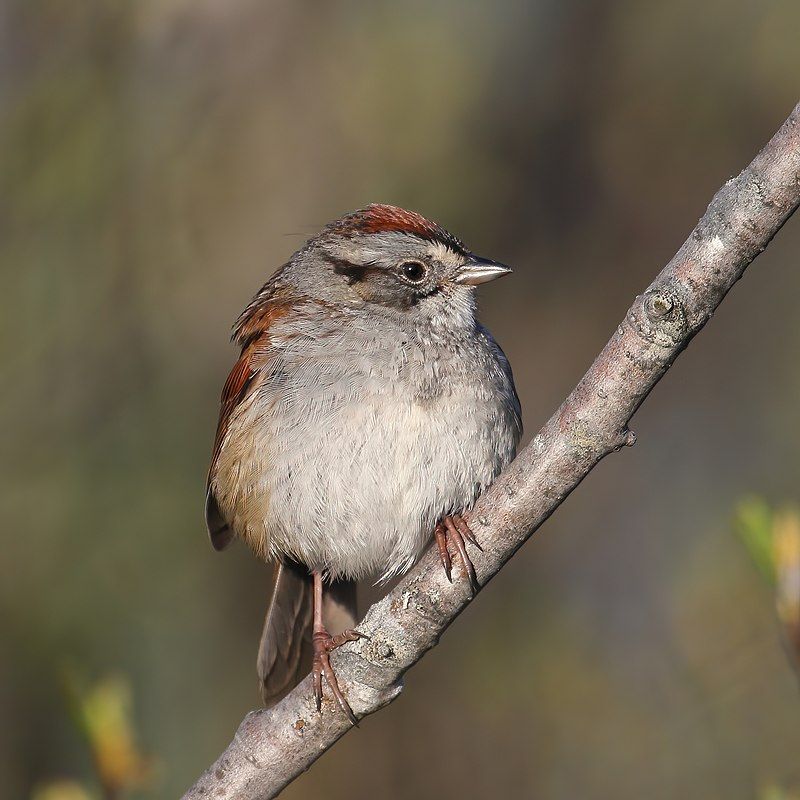
The Swamp Sparrow, scientifically named Melospiza Georgiana, is a marsh-dwelling songbird found in wetlands and swamps across eastern North America. They have rich reddish-brown plumage, distinctive gray facial markings, and a rust-colored cap.
Swamp Sparrows are known for their sweet and melodious songs, often heard in their preferred habitat of cattail marshes and wet meadows.
They primarily feed on seeds, insects, and small invertebrates found in their wetland homes. These sparrows are a delight to birdwatchers exploring marshy habitats.
| Kingdom | Animalia |
| Phylum | Chordata |
| Clade | Dinosauria |
| Class | Aves |
| Order | Passeriformes |
| Family | Passerellidae |
| Genus | Melospiza |
| Species | M. georgiana |
35. Brown-Headed Cowbird (Molothrus ater):
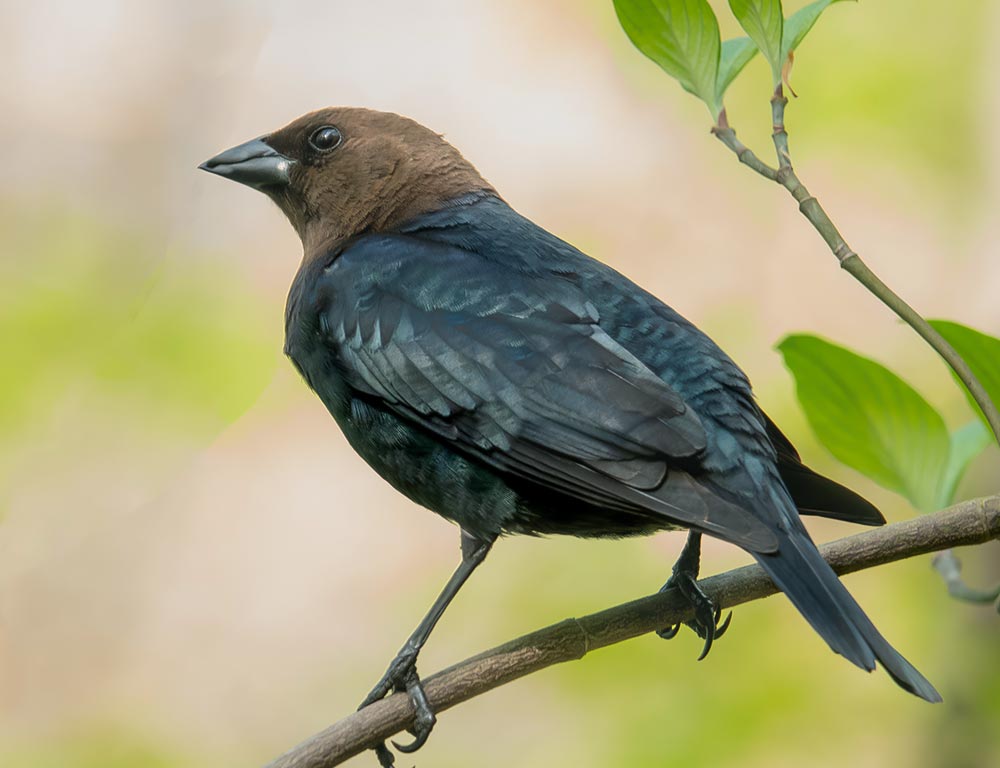
The Brown-Headed Cowbird, scientifically known as Molothrus ater, is a parasitic bird species found throughout North America. As the name suggests, these birds have glossy black plumage and brown heads in males.
Brown-Headed Cowbirds are notorious for laying their eggs in the nests of other bird species, leaving the host birds to raise their chicks.
This behavior has led to controversy, as it can harm the reproductive success of other species. They have a unique and distinctive vocalization that sounds like a “clinking glass.” Despite their parasitic habits, these birds play a role in ecosystem dynamics.
| Kingdom | Animalia |
| Phylum | Chordata |
| Clade | Dinosauria |
| Class | Aves |
| Order | Passeriformes |
| Family | Icteridae |
| Genus | Molothrus |
| Species | M. ater |
36. Common Grackle (Quiscalus quiscula)
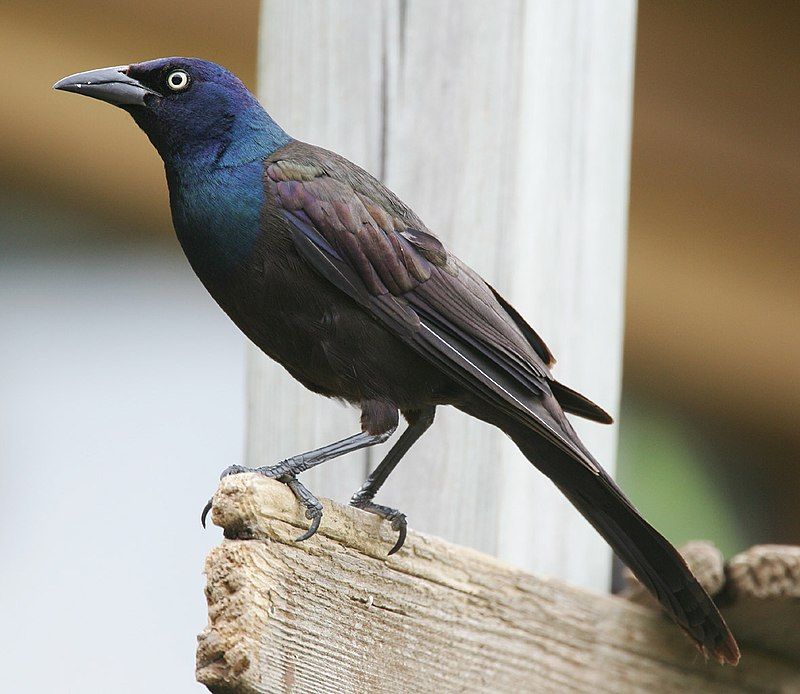
The Common Grackle, scientifically known as Quiscalus quiscula, is a large and glossy blackbird found across North America.
Males have iridescent blue-purple plumage, while females are more subdued. These birds are known for their sharp yellow eyes and long tails.
Common Grackles are highly adaptable and often seen foraging in various habitats, including urban areas and agricultural fields.
They feed on a diverse diet of insects, fruits, and grains. Their loud and varied calls, including harsh “chack” and “screech” sounds, are common in their territories.
| Kingdom | Animalia |
| Phylum | Chordata |
| Clade | Dinosauria |
| Class | Aves |
| Order | Passeriformes |
| Family | Icteridae |
| Genus | Quiscalus |
| Species | Q. quiscula |
37. Baltimore Oriole (Icterus galbula)
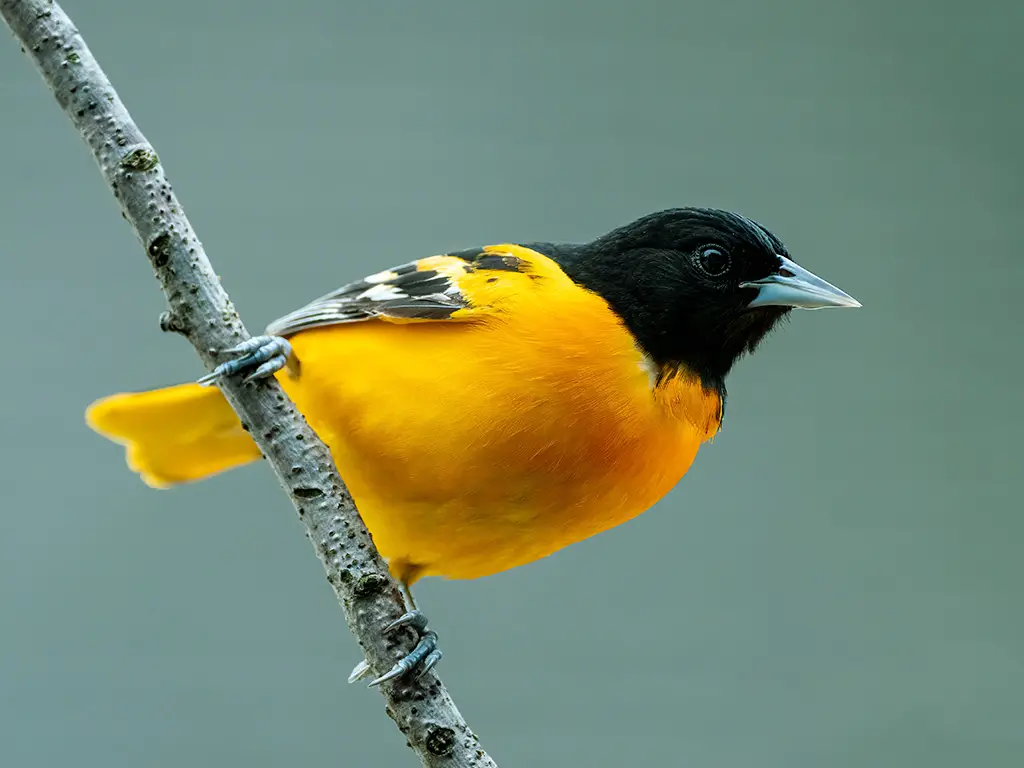
The Baltimore Oriole, scientifically named Icterus galbula, is a vibrant and striking bird found in eastern North America. Males have brilliant orange plumage with black markings, while females have more subdued coloration.
These orioles are known for their intricately woven hanging nests, often seen in deciduous trees. They primarily feed on nectar, insects, and fruit. The Baltimore Oriole’s melodious and flutelike song is a harbinger of spring in their breeding range.
| Kingdom | Animalia |
| Phylum | Chordata |
| Clade | Dinosauria |
| Class | Aves |
| Order | Passeriformes |
| Family | Icteridae |
| Genus | Icterus |
| Species | I. galbula |
38. Red-Winged Blackbird (Agelaius phoeniceus):
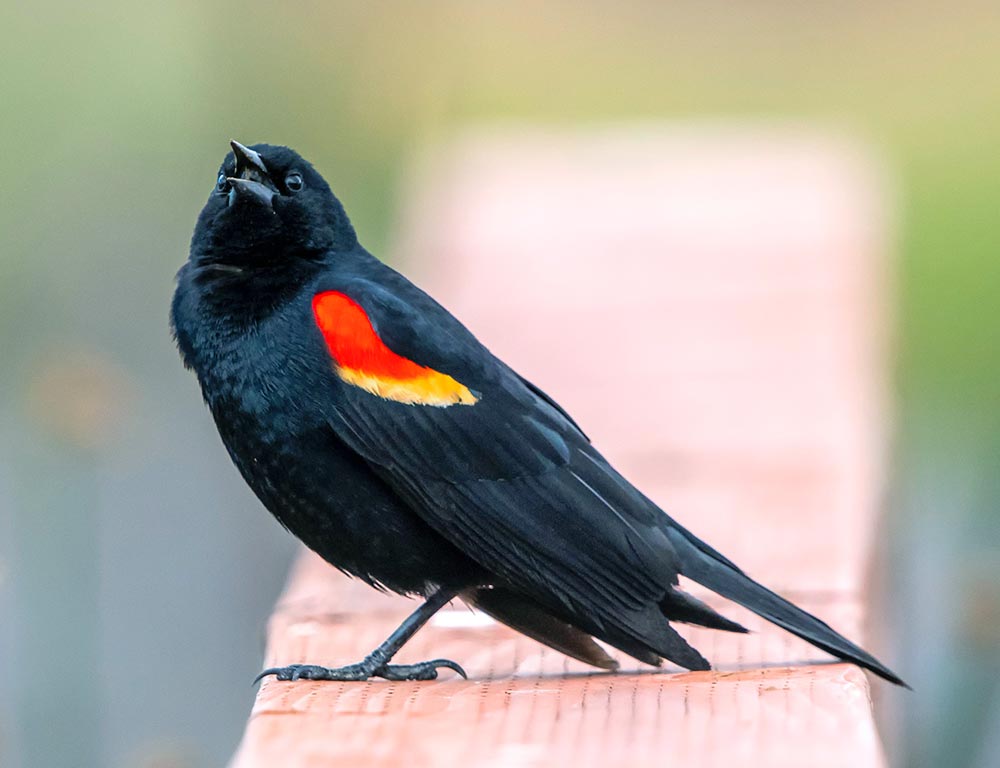
The Red-Winged Blackbird, scientifically called Agelaius phoeniceus, is a common sight in wetlands and marshes across North America.
Males have glossy black plumage with distinctive red and yellow wing patches, which they flash during territorial displays.
Red-winged blackbirds are known for their distinctive “conk-la-ree” calls and songs, heard throughout the breeding season.
They are omnivorous, feeding on insects, seeds, and aquatic invertebrates. These blackbirds are highly territorial and are often seen perched atop cattails or other vegetation.
| Kingdom | Animalia |
| Phylum | Chordata |
| Clade | Dinosauria |
| Class | Aves |
| Order | Passeriformes |
| Family | Icteridae |
| Genus | Agelaius |
| Species | A. phoeniceus |
39. Red-Headed Woodpecker (Melanerpes erythrocephalus)
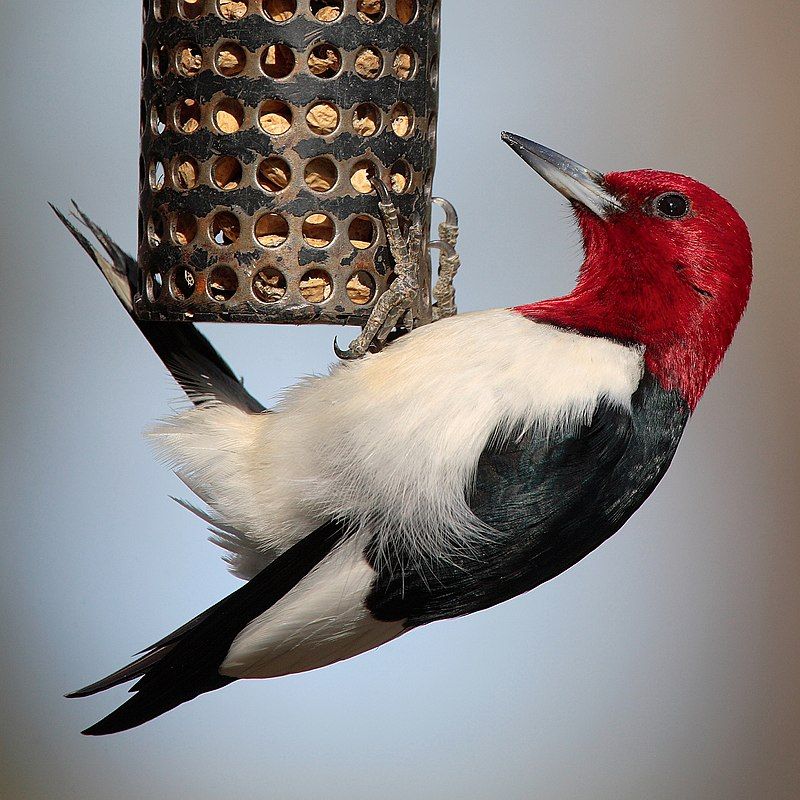
The Red-Headed Woodpecker, scientifically known as Melanerpes erythrocephalus, is a striking and unmistakable bird found in North America. They have bright red heads, white bodies, black wings, and tails.
These woodpeckers are agile flyers and are known for their habit of catching insects in mid-air. They also store food by impaling insects, fruits, and nuts on tree branches or crevices.
Their calls are a series of sharp “chur” and “chur-r-r” sounds. Unfortunately, Red-Headed Woodpecker populations have declined due to habitat loss.
| Kingdom | Animalia |
| Phylum | Chordata |
| Clade | Dinosauria |
| Class | Aves |
| Order | Piciformes |
| Family | Picidae |
| Genus | Melanerpes |
| Species | M. erythrocephalus |
40. Brown Thrasher (Toxostoma rufum)
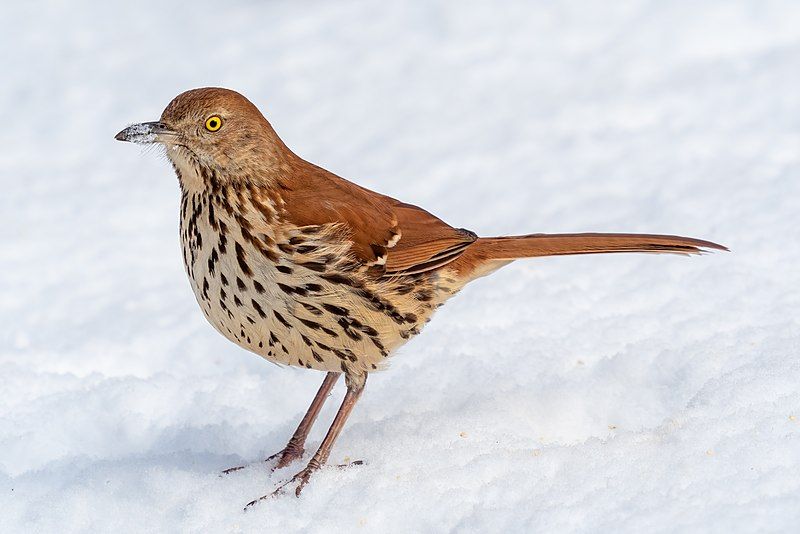
The Brown Thrasher, scientifically named Toxostoma rufum, is a large, secretive songbird found in North America. These birds have brownish plumage with streaked underparts and striking yellow eyes.
Brown Thrashers are known for their rich and complex songs, which consist of repeated phrases and mimicry of other bird species. They are often found in dense thickets and brushy areas, where they forage for insects, fruits, and seeds. Their behavior includes scratching at the ground to uncover food.
| Kingdom | Animalia |
| Phylum | Chordata |
| Clade | Dinosauria |
| Class | Aves |
| Order | Passeriformes |
| Family | Mimidae |
| Genus | Toxostoma |
| Species | T. rufum |
41. Pine Siskin (Spinus pinus)
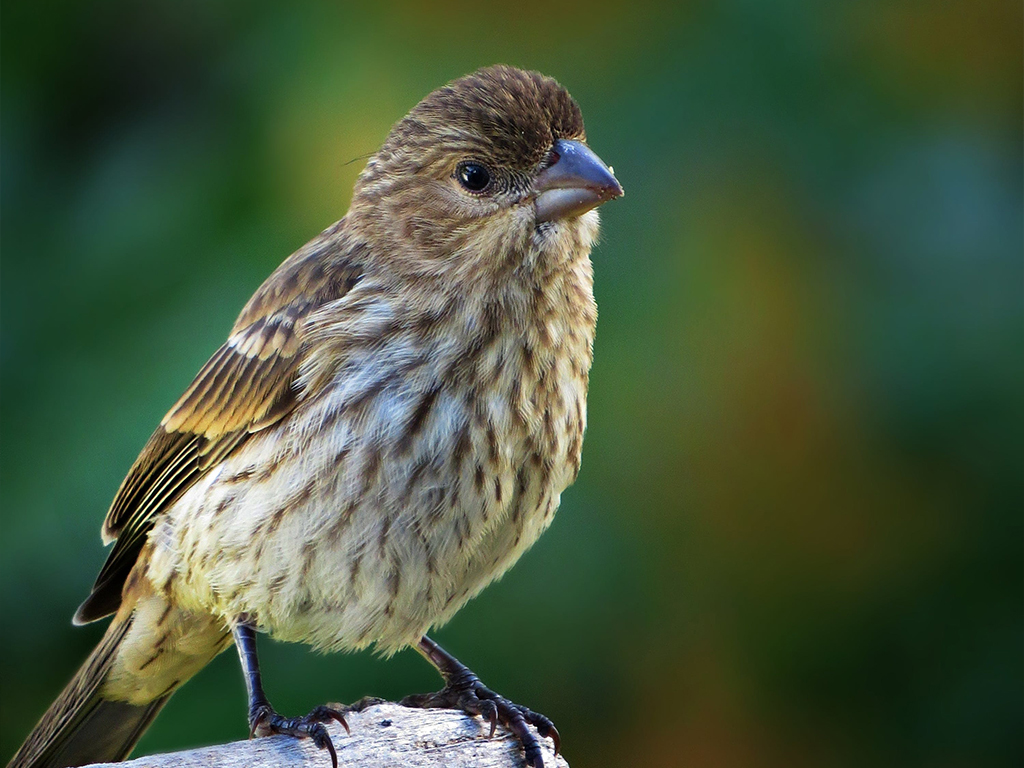
The Pine Siskin, scientifically known as Spinus pinus, is a small finch found in North America. These birds are often recognized by their brown streaked plumage and pointed bills. Pine Siskins are highly nomadic, and their migrations are driven by food availability.
These finches primarily feed on seeds, particularly those of conifer trees, making them valuable for controlling insect populations in forests. They are known for their chittering calls and are often seen in mixed flocks with other finches, such as goldfinches and redpolls.
| Kingdom | Animalia |
| Phylum | Chordata |
| Clade | Dinosauria |
| Class | Aves |
| Order | Passeriformes |
| Family | Fringillidae |
| Genus | Spinus |
| Species | S. pinus |
42. Rufous Hummingbird (Selasphorus rufus)
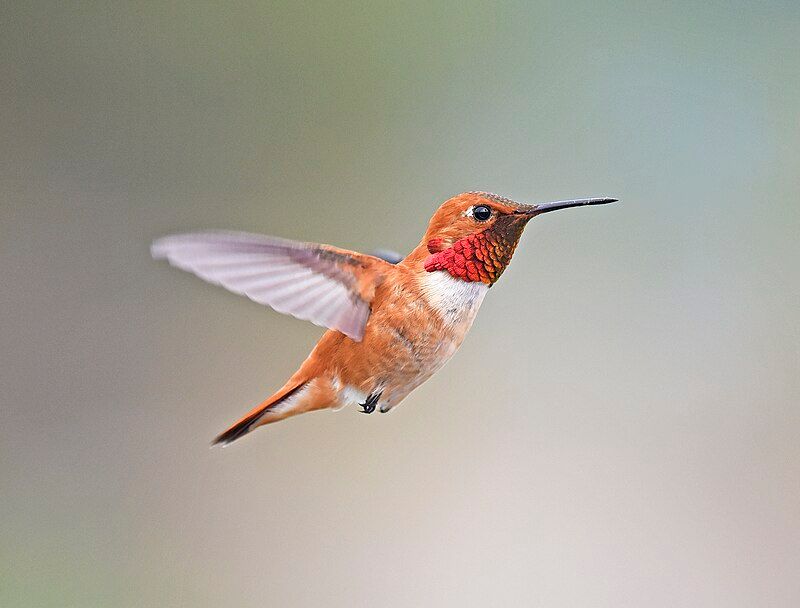
The Rufous Hummingbird, scientifically named Selasphorus rufus, is a dazzling and feisty hummingbird found in western North America. Males have bright coppery-red plumage with an iridescent throat patch, while females are more subdued.
Rufous Hummingbirds are known for their territorial behavior and their high-pitched, metallic trilling sounds. They feed on nectar from various flowers and are excellent aerial acrobats.
These birds are known for their long migrations, with some traveling from Alaska to Mexico for the winter.
| Kingdom | Animalia |
| Phylum | Chordata |
| Clade | Strisores |
| Class | Aves |
| Order | Apodiformes |
| Family | Trochilidae |
| Genus | Selasphorus |
| Species | S. rufus |
43. New World Warblers (Parulidae)
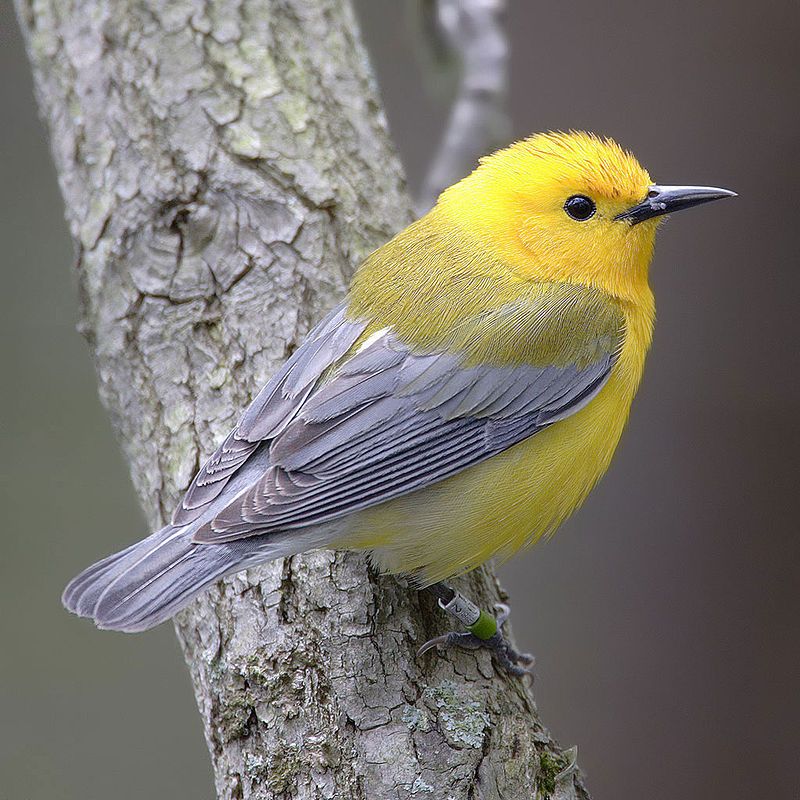
New World Warblers, family Parulidae, are a diverse group of small, colorful songbirds primarily found in the Americas. These birds are often admired for their striking plumage and melodious songs.
| Kingdom | Animalia |
| Phylum | Chordata |
| Clade | Dinosauria |
| Class | Aves |
| Order | Passeriformes |
| Family | Parulidae |
44. Ruby-Throated Hummingbirds (Archilochus colubris)
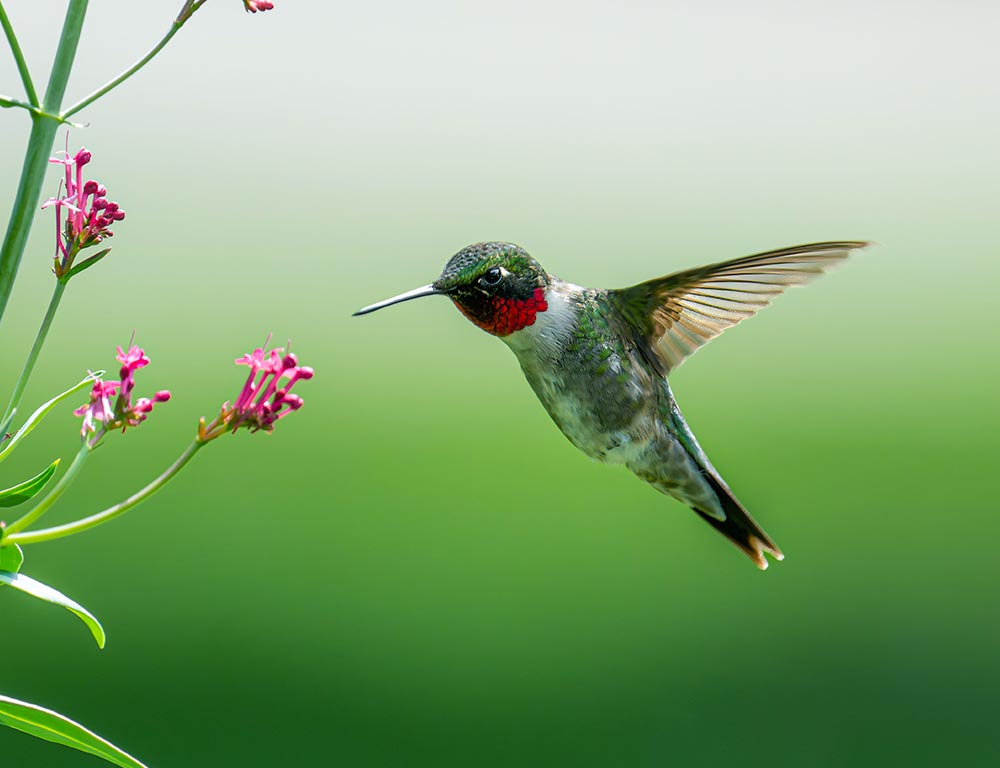
The Ruby-Throated Hummingbird, scientifically named Archilochus colubris, is a jewel-like bird found in eastern North America. These tiny birds are known for their iridescent green plumage and the dazzling ruby-red throat patch of males.
| Kingdom | Animalia |
| Phylum | Chordata |
| Clade | Strisores |
| Class | Aves |
| Order | Apodiformes |
| Family | Trochilidae |
| Genus | Archilochus |
45. Snowy Owl (Bubo scandiacus)
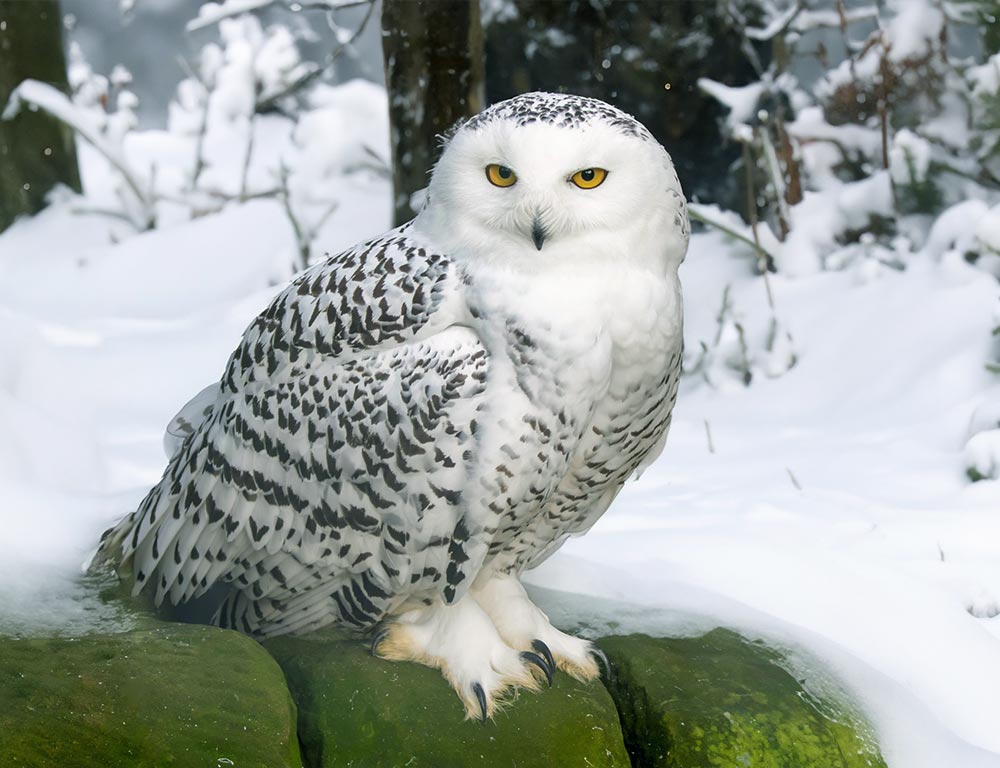
The Snowy Owl, scientifically known as Bubo scandiacus, is a magnificent and iconic bird of the Arctic region. These owls are known for their stunning pure white plumage, which provides effective camouflage against snow and ice.
Snowy Owls are powerful hunters, primarily feeding on lemmings and other small mammals in their tundra habitats.
Their round faces and bright yellow eyes give them a distinctive appearance. These owls occasionally migrate south for food, offering birdwatchers a rare sight in more temperate regions.
| Kingdom | Animalia |
| Phylum | Chordata |
| Clade | Dinosauria |
| Class | Aves |
| Order | Strigiformes |
| Family | Strigidae |
| Genus | Bubo |
| Species | B. scandiacus |
46. Yellow-Rumped Warbler (Setophaga coronata)
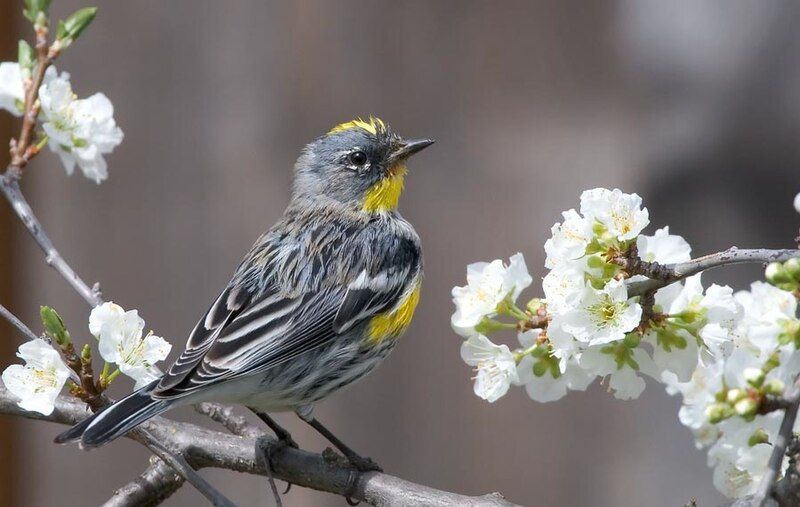
The Yellow-Rumped Warbler, scientifically known as Setophaga coronata, is a striking and widespread songbird in North America.
These warblers are named for the bright yellow patches on their rumps, which are distinctive field marks. Males also exhibit yellow throats and striking black streaks in their breeding plumage.
Yellow-rumped warblers are highly adaptable and have a varied diet, feeding on insects, fruits, and berries.
They are known for their energetic foraging, often seen flitting through trees and foliage. Their musical trills and chip calls are delightful in woodlands and gardens.
| Kingdom | Animalia |
| Phylum | Chordata |
| Clade | Dinosauria |
| Class | Aves |
| Order | Passeriformes |
| Family | Parulidae |
| Genus | Setophaga |
| Species | S. coronata |
47. White-Crowned Sparrow (Zonotrichia leucophrys)
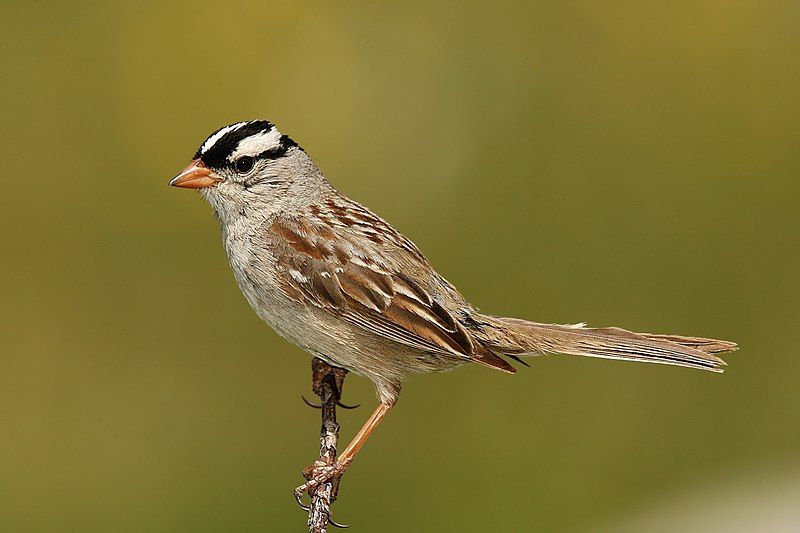
The White-Crowned Sparrow, scientifically named Zonotrichia leucophrys, is a handsome sparrow found throughout North America. They have distinctive black and white stripes on their heads, with white crowns and pink bills.
White-Crowned Sparrows are known for their clear, melodious songs, with regional variations. They primarily forage on seeds, insects, and berries. These sparrows are often seen in shrubby habitats and grasslands, and their wintering grounds extend from the southern United States to Mexico.
| Kingdom | Animalia |
| Phylum | Chordata |
| Clade | Dinosauria |
| Class | Aves |
| Order | Passeriformes |
| Family | Passerellidae |
| Genus | Zonotrichia |
| Species | Z. leucophrys |
48. Ruby-Crowned Kinglet (Regulus calendula)
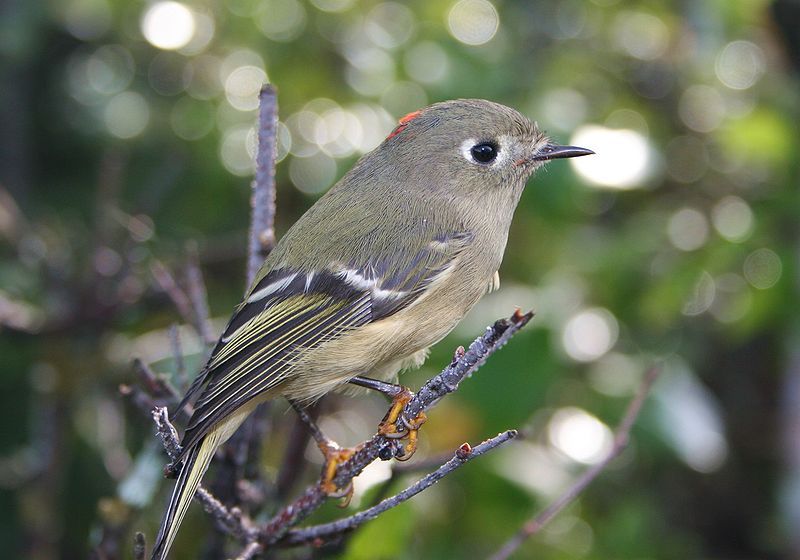
The Ruby-Crowned Kinglet, scientifically known as Regulus calendula, is a tiny and energetic songbird found in North America. These kinglets are named for the hidden ruby-red crown patch on their heads, which is often concealed.
Ruby-crowned kinglets are known for their constant motion and insect-like calls. They forage actively, gleaning insects and spiders from tree branches and foliage. Their high-pitched “see-see-see” calls are common in coniferous and mixed woodlands.
| Kingdom | Animalia |
| Phylum | Chordata |
| Clade | Dinosauria |
| Class | Aves |
| Order | Passeriformes |
| Family | Regulidae |
| Genus | Corthylio |
| Species | C. calendula |
49. Red-Breasted Nuthatch (Sitta canadensis)
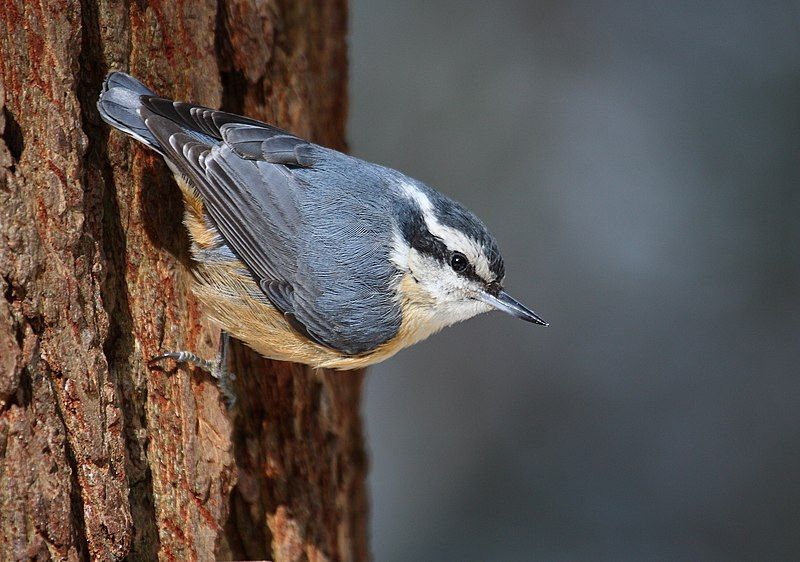
The Red-Breasted Nuthatch, scientifically called Sitta canadensis, is a small and lively woodpecker-like bird found in North America.
These nuthatches are recognized by their striking blue-gray plumage, white face, and distinctive rusty-red underparts. Red-breasted nuthatches are known for their distinctive nasal calls and honking sounds.
They are expert climbers, often seen moving headfirst down tree trunks and branches in search of insects, seeds, and nuts. These nuthatches are year-round residents in many northern forests and woodlands.
| Kingdom | Animalia |
| Phylum | Chordata |
| Clade | Dinosauria |
| Class | Aves |
| Order | Passeriformes |
| Family | Sittidae |
| Genus | Sitta |
| Species | S. canadensis |
Conclusion
The winter bird population in Kentucky is diverse and includes both resident birds and those that migrate from the north.
The state’s varied habitats, such as forests, wetlands, and grasslands, provide excellent opportunities for these species to find food and shelter during the colder months.
Winter birding is a popular activity in Kentucky, attracting enthusiasts who can observe and appreciate the beauty and adaptations of these incredible creatures.
Protecting and conserving the habitats that support winter birds is crucial to ensuring their continued presence in the state.
By maintaining healthy ecosystems and promoting conservation efforts, Kentucky can continue to provide a home for these birds and their important role in our environment.